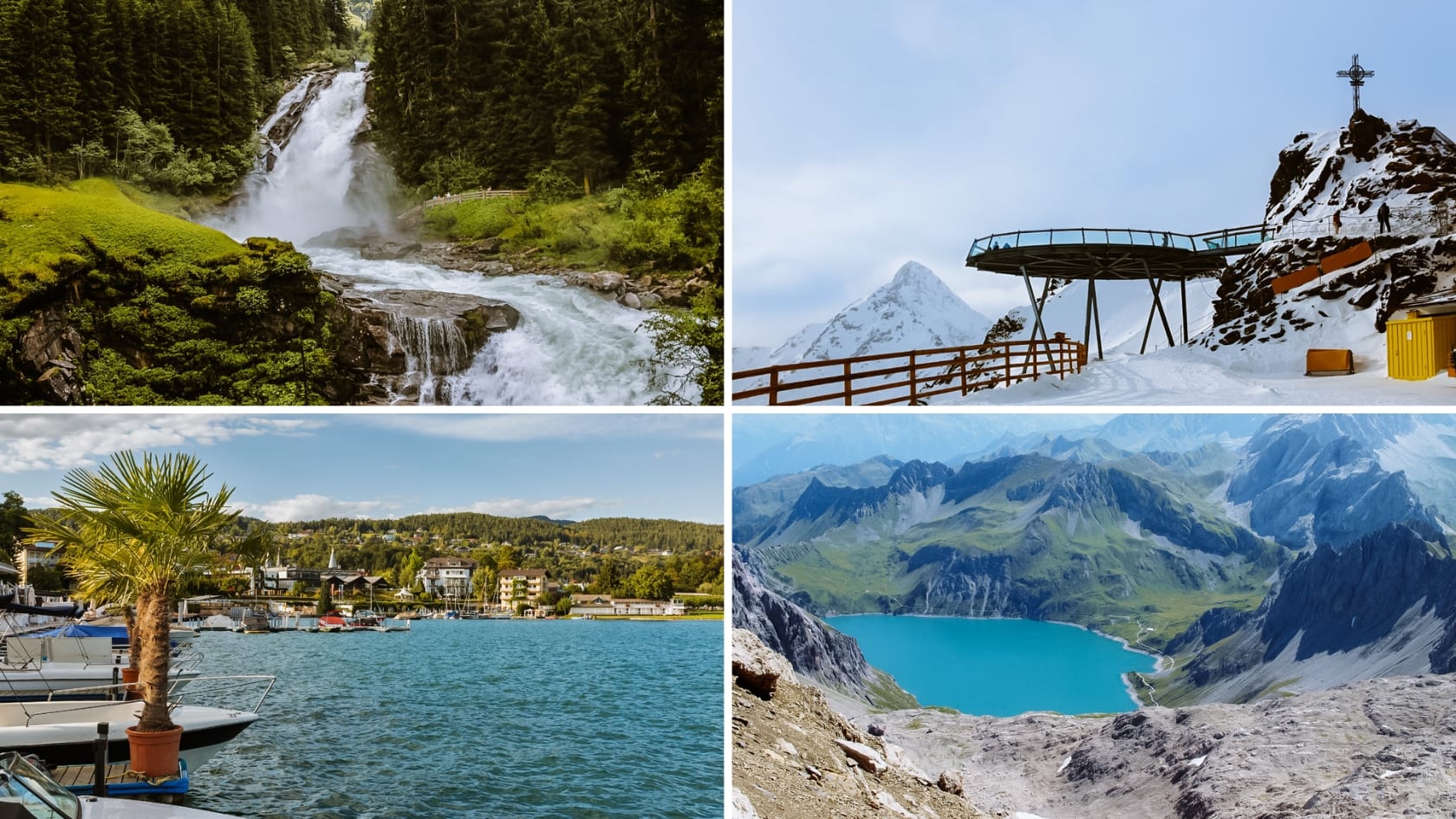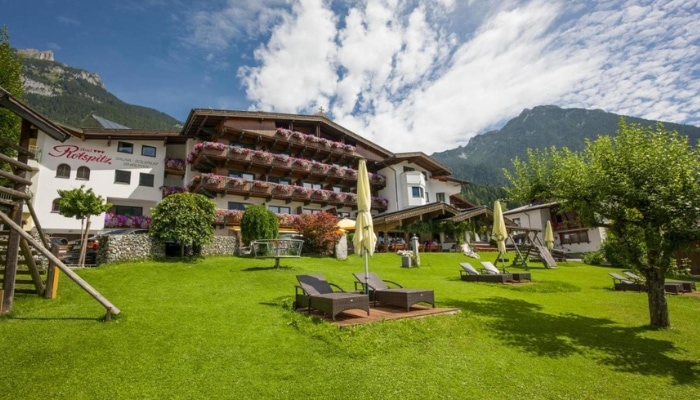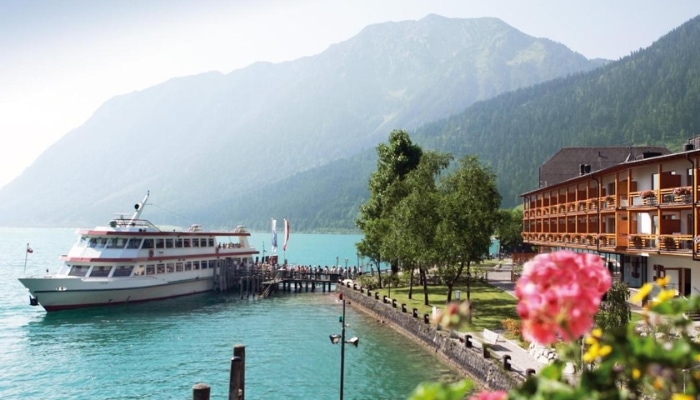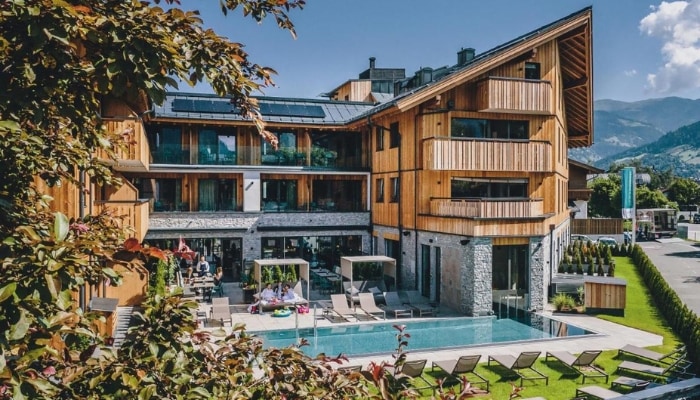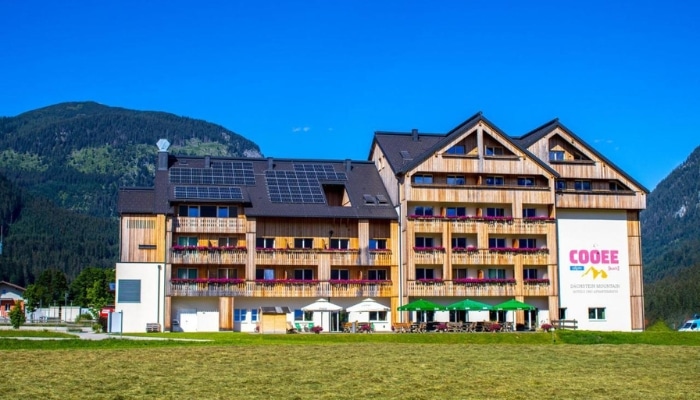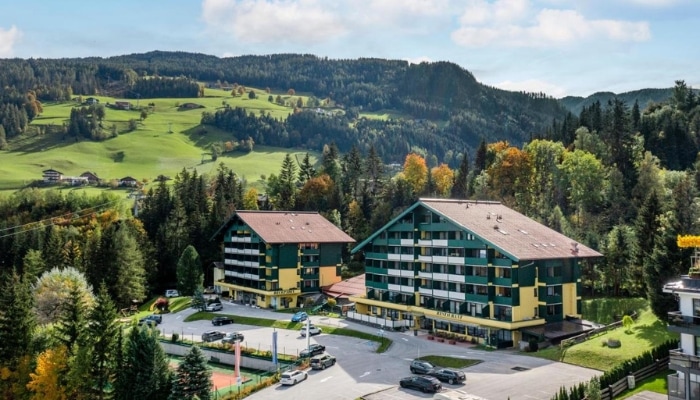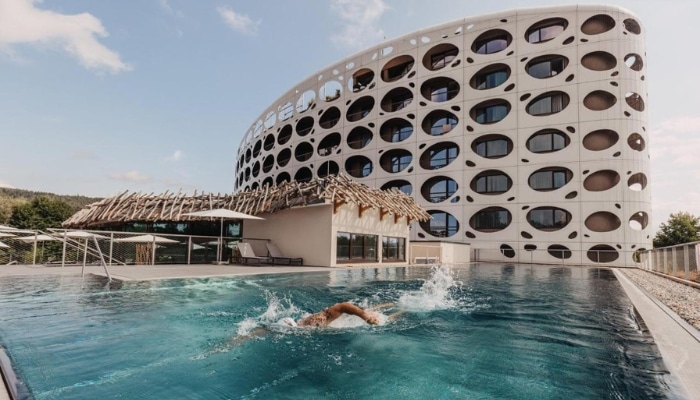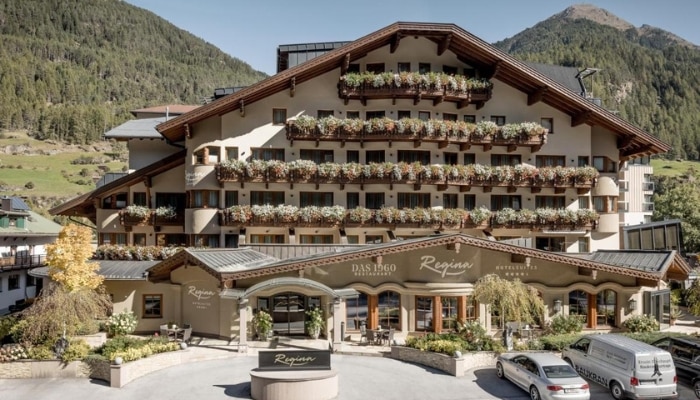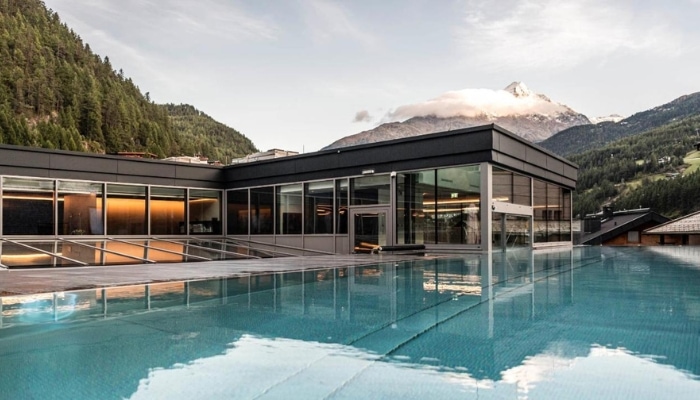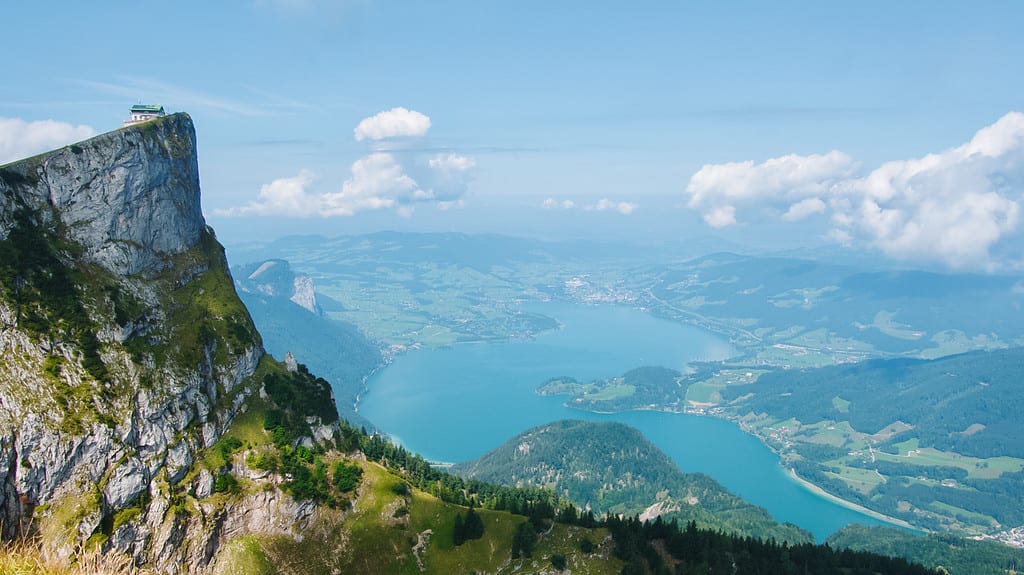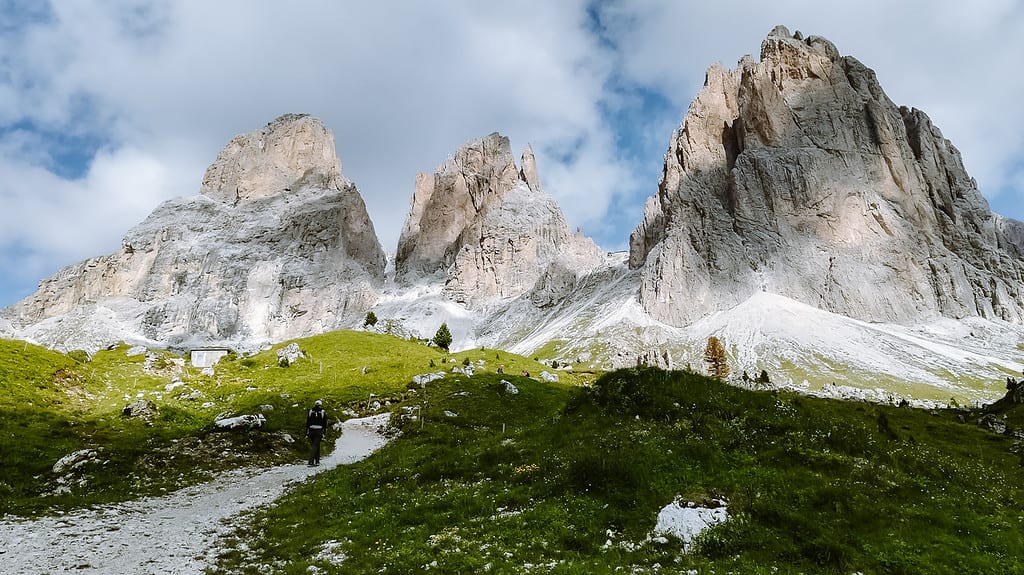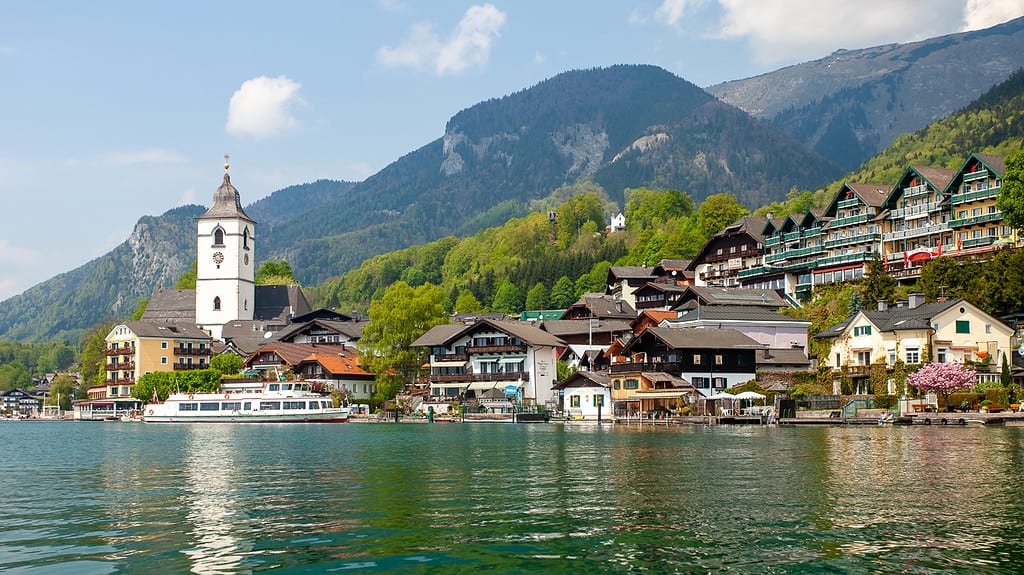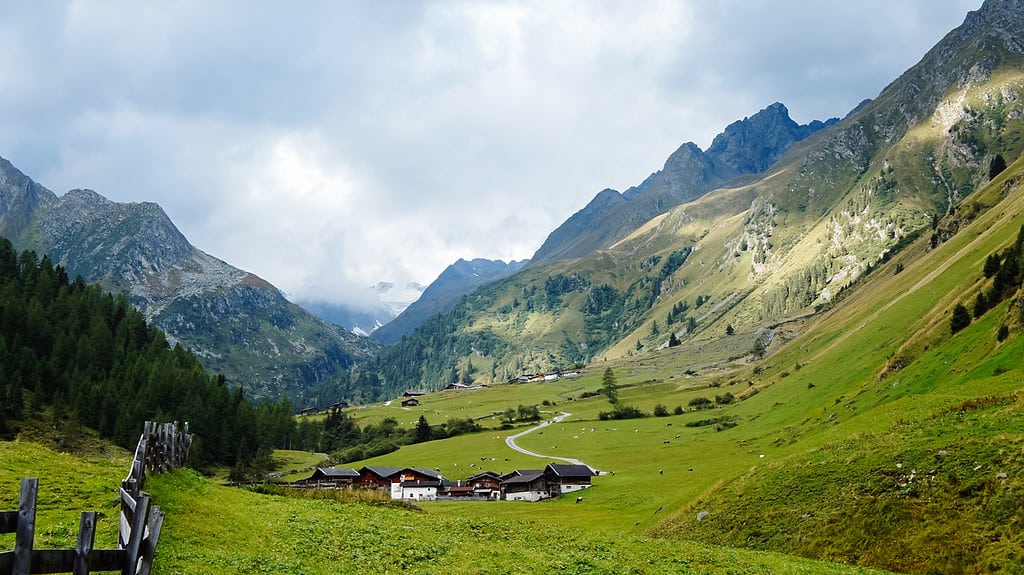Looking for tips on the most beautiful places in the Austrian Alps? What are the most beautiful places in the Austrian Alps? Get inspired by our tips on the best places in the Austrian Alps and what not to miss.
In today’s article, we’ll be showcasing the best of the Austrian Alps – from the highest waterfalls to the most beautiful lakes to the largest glacial cave in the world. Ready? Here we go.
The most beautiful places in the Austrian Alps
1. Krimmel Waterfalls
If we are compiling a list of the most beautiful places in the Austrian Alps, the Krimmel Waterfalls cannot be missed. With a height of 380 metres, they are the highest waterfalls in Europe.
The Krimmel Waterfalls are located on the Krimmler Ache River in the High Tauern National Park (more about the park in a moment). They consist of 3 parts – the lower waterfall with a height of 140 m, the middle waterfall with a height of 100 m and the upper waterfall with a height of 140 m.
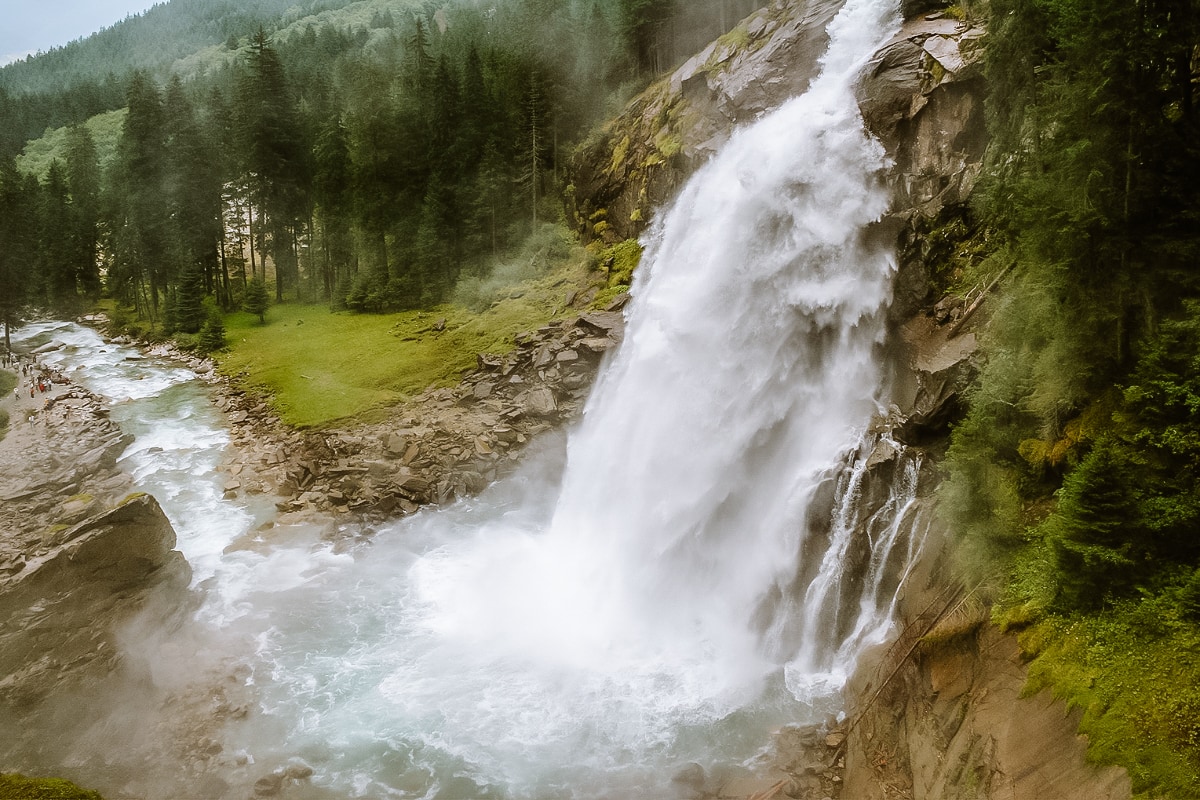
An average of 6 cubic meters per second flow through the falls. A waterproof layer is a must.
The individual waterfalls are connected by a 4-kilometre long paved path, which is also passable by strollers. There are 11 stops from which you can see the waterfalls up close.
You will gradually climb from an altitude of 1,070 m to 1,450 m – the higher you go, the more people will be left behind. You will reach the top of a beautiful valley with a restaurant, where only a handful of visitors go.
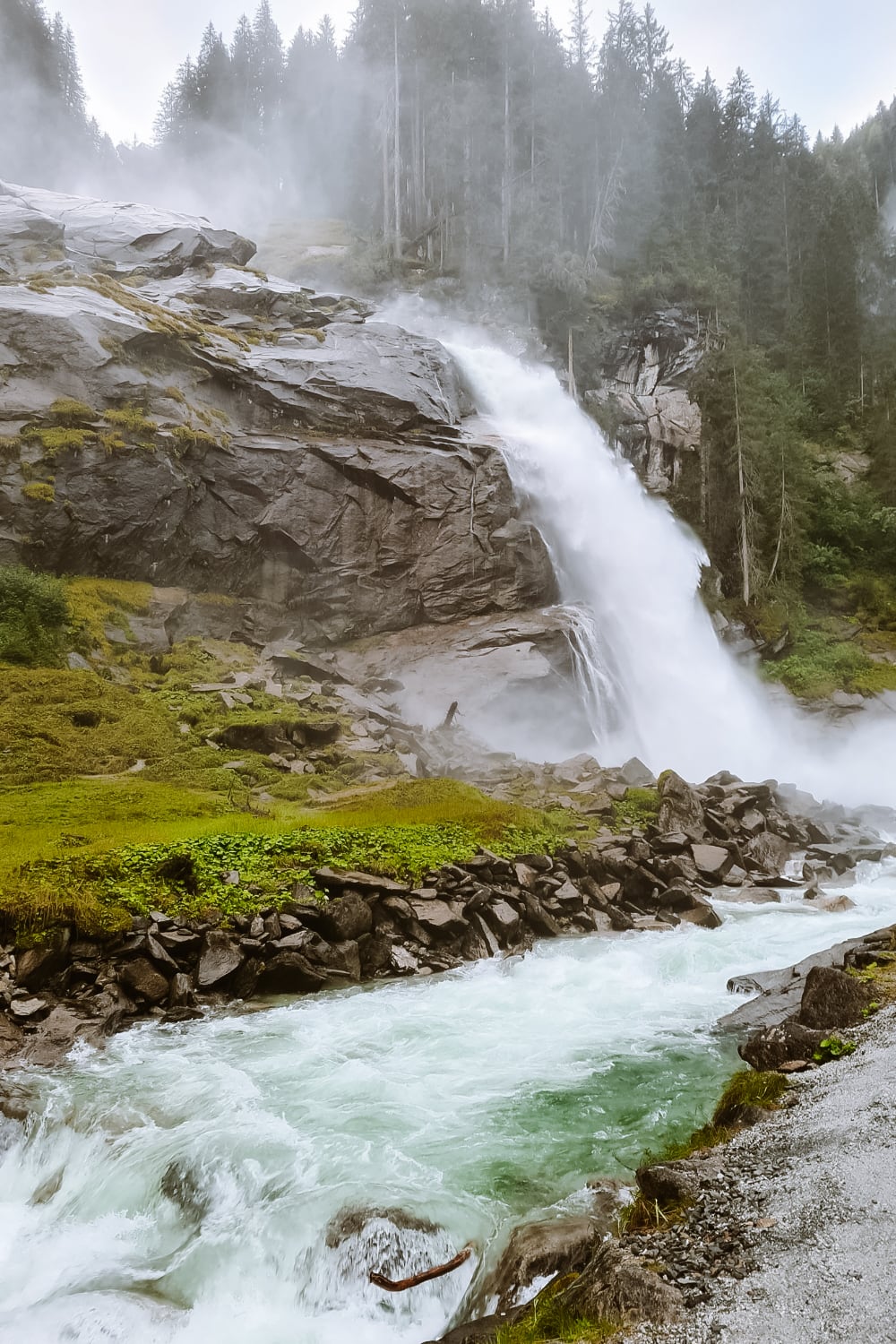
How to get to Krimmel Falls?
When you turn off the 165, you will reach the panoramic Gerlos Alpenstrasse. This is paid – in 2024 12 € for cars, 8,50 € for motorbikes, or. it is possible to get a pass for a longer period of time at a discounted price.
From the road you will see the waterfalls in all their glory. There are nicer mountain roads in Austria, but still the Gerlos high mountain road is definitely worth seeing. Moreover, you can easily spend the whole day at the waterfalls if you go up the valley. There are alpine pastures where you can refresh yourself along the way.
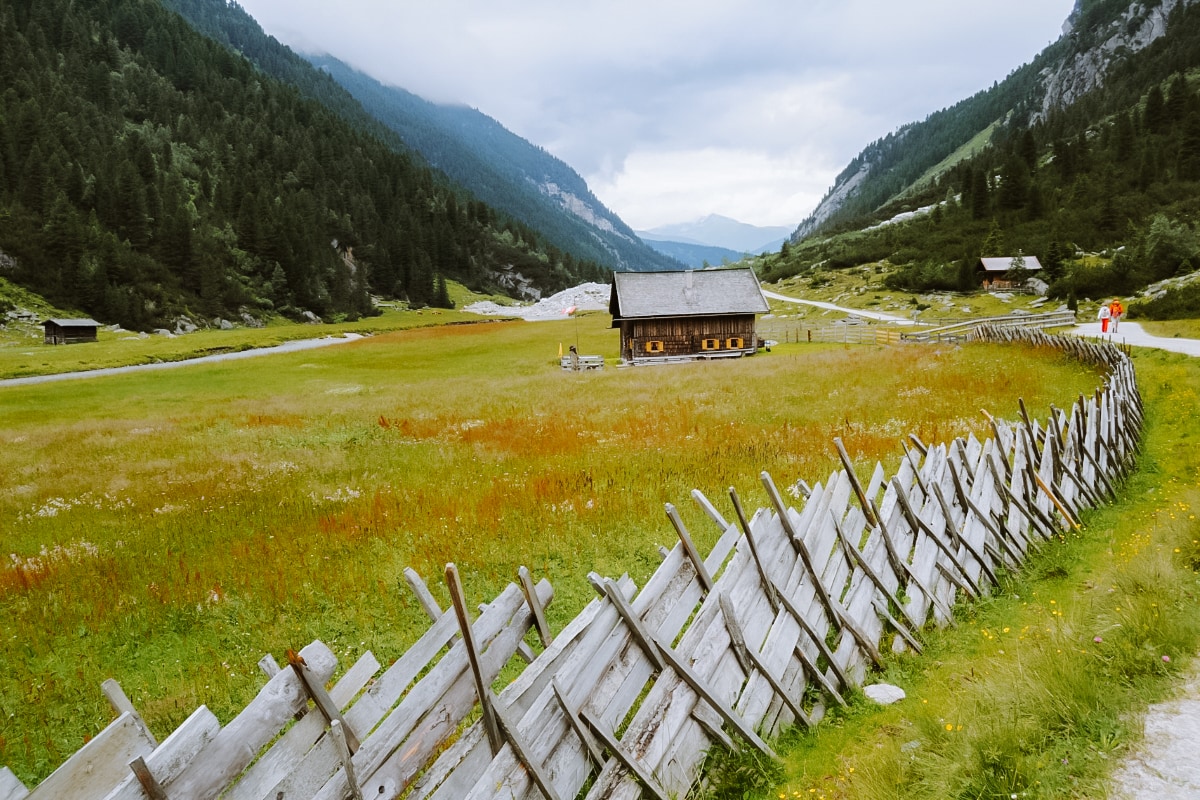
Parking at Krimmel Falls
About halfway along the Gerlos Alpenstrasse, the waterfalls themselves can be found – there are large car parks, tourist information and refreshments along the way.
Parking is paid. You pick up a token from the machine and insert it into the machine before you leave, where the total price for parking will pop up. Here you can find more information about parking, opening hours and admission fees.
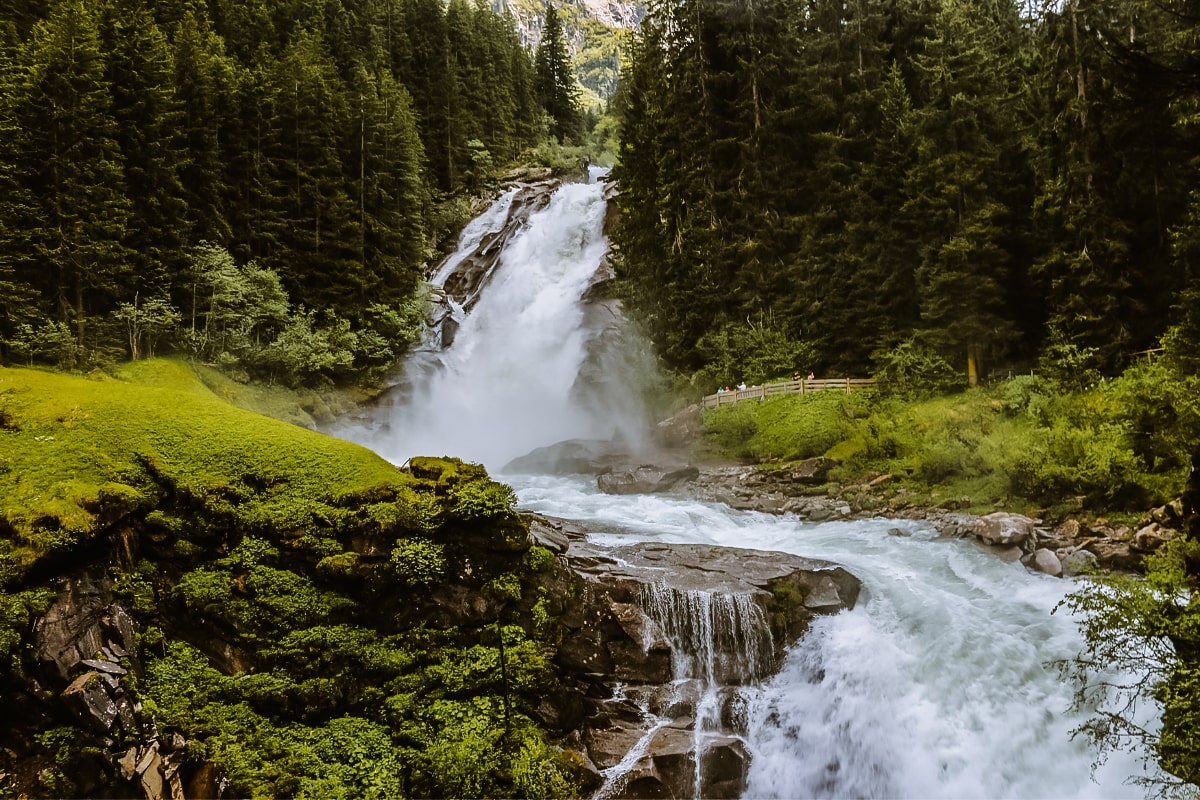
Entrance fees and opening hours of the Krimmel Waterfalls
On the way to the waterfalls there is an entrance gate where you pay the entrance fee. This is as follows in 2024 – full admission €8 and admission for children 6-15 years €4. Combination tickets with the water world are also available.
Officially, the waterfalls are open from 1st May to the end of October. During the season it is open daily from 9:00-17:00 (last entry at 16:30). The waterfalls are also accessible out of season.
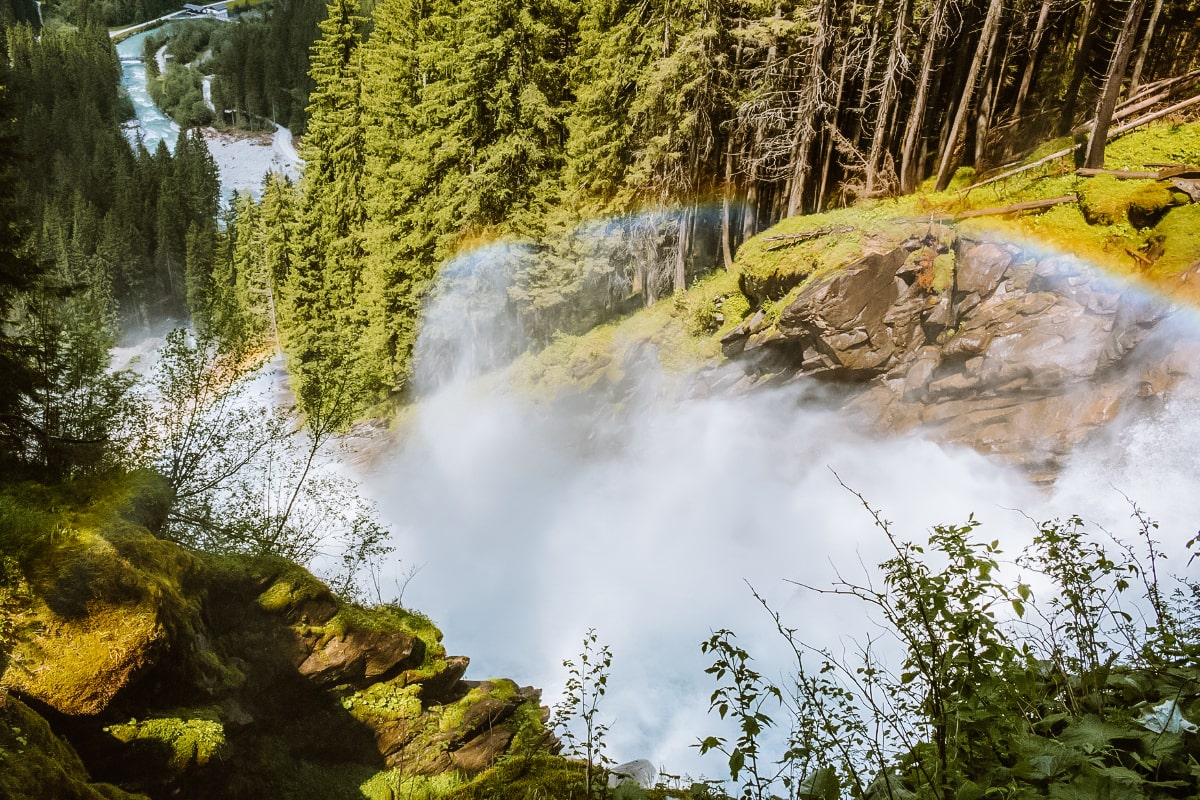
Route along the Krimmel Waterfalls
The lower waterfall can be reached in about 10 minutes. Once you’ve had a rest, walk back a short distance and follow the paved trail that can be found on the right side of the falls. There are viewpoints along the way where you can see the waterfalls up close. The road is paved.
The climb takes about 1.5 – 2 hours.
2. Salzkammergut
The Salzkammergut is one of the most beautiful areas not only in Austria, but in the whole of the Alps. And it is very easily accessible from the Czech Republic.
The area is famous for its crystal clear lakes, majestic mountains, green valleys and a rich history of salt mining dating back to prehistoric times.
One of the most visited places in the Salzkammergut is the picturesque town of Hallstatt, which stretches along Lake Hallstatt. In addition to a walk through the town, visit the local salt mines to learn more about the history of mining.
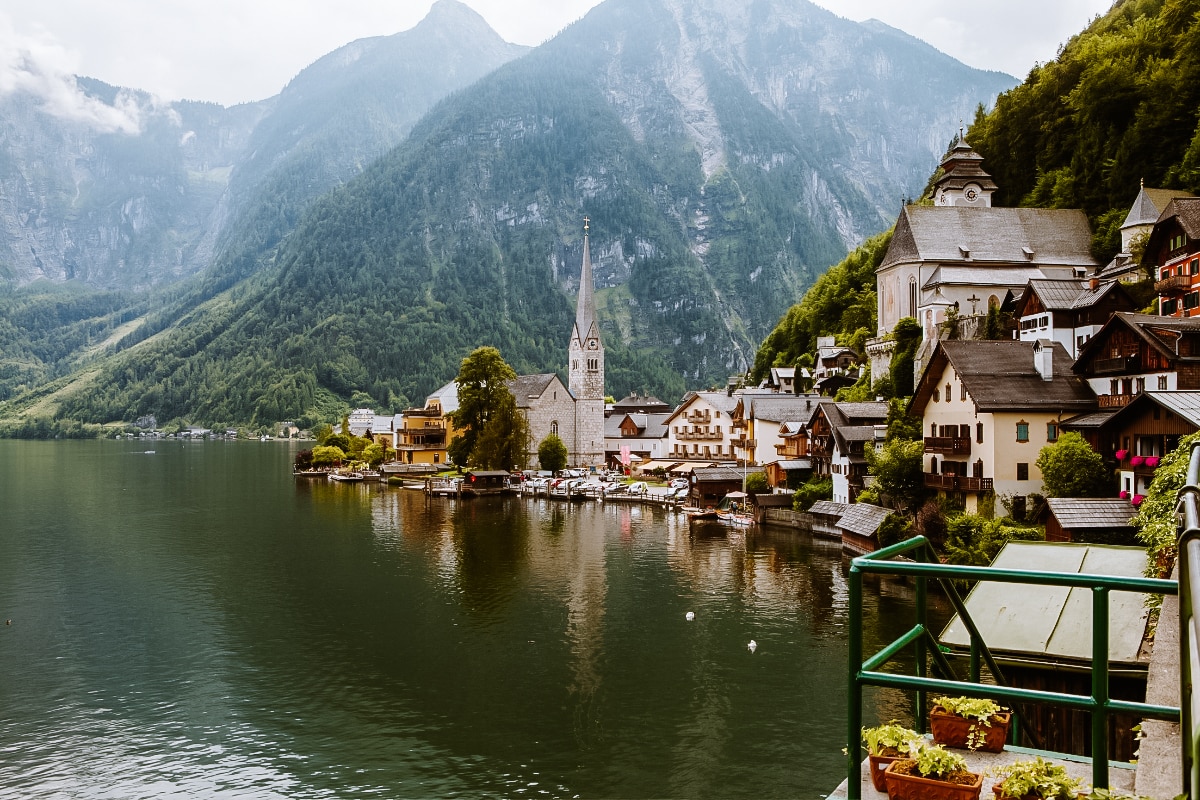
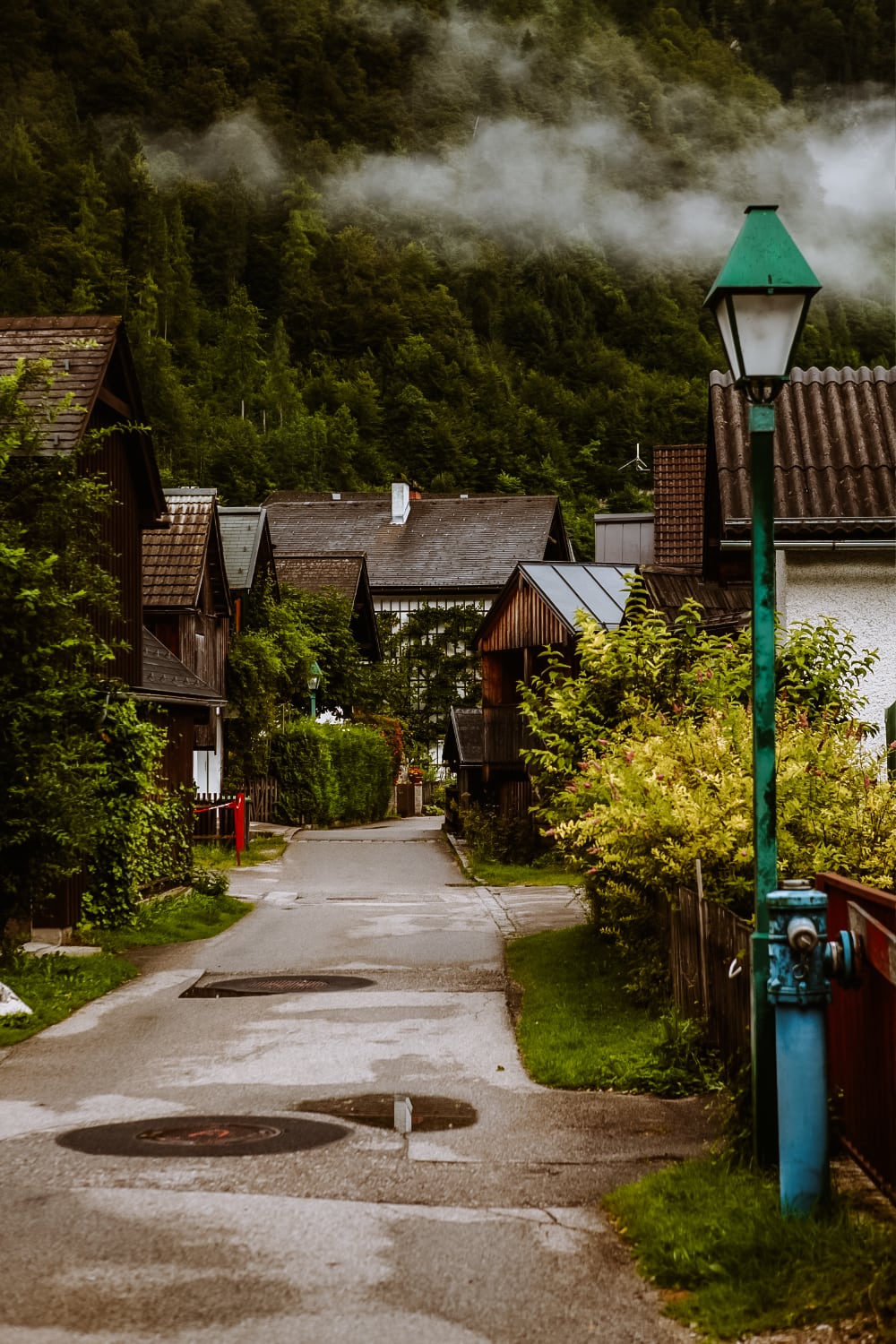
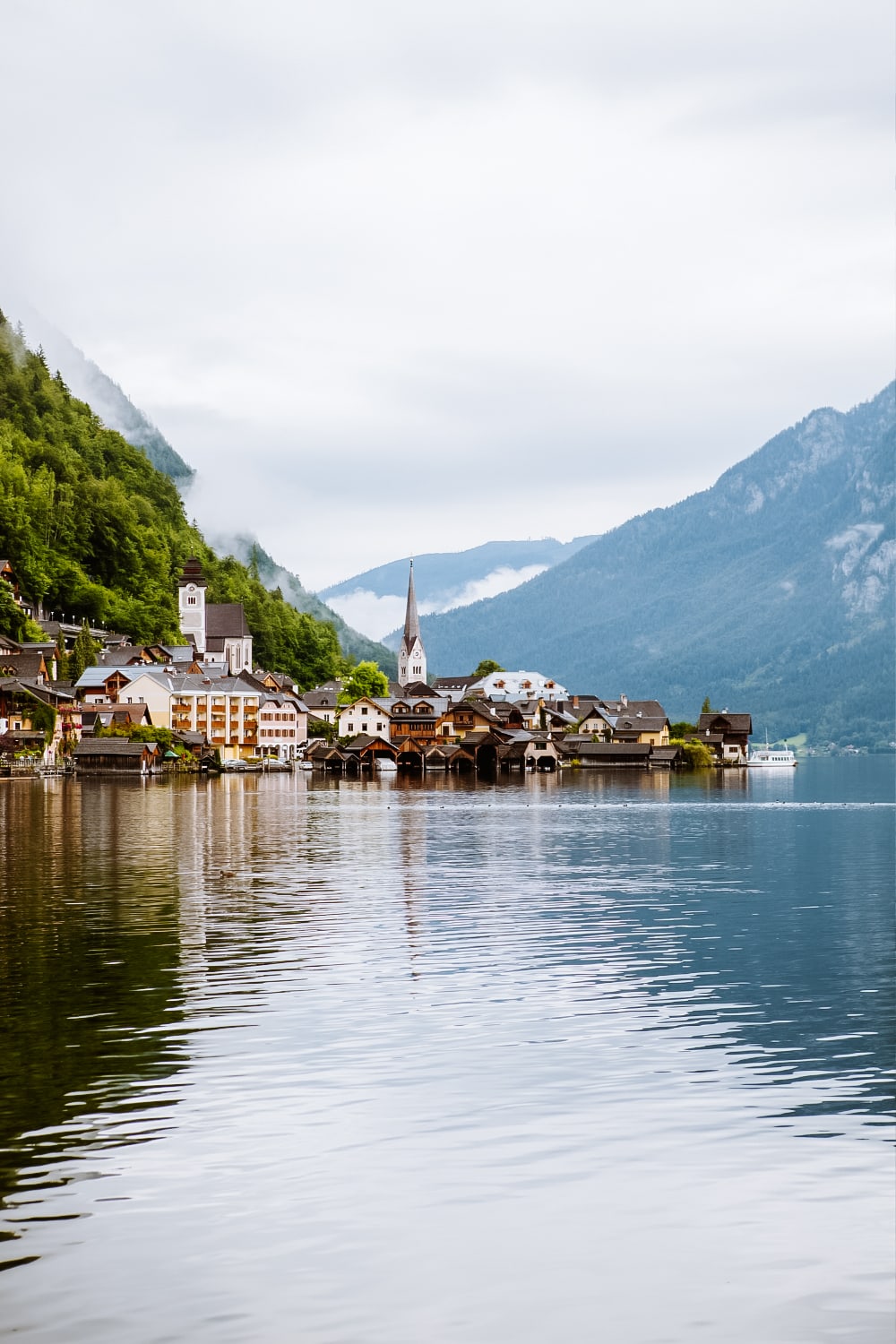
Don’t miss a visit to the Alpine lakes, which are known for their turquoise colour and water temperature ideal for summer recreation.
One of the most beautiful lakes is Wolfgangsee, which we wrote about in a separate article. While you’re here, don’t miss the cable car ride to the top of the Schafberg. From the top there are magnificent views of the entire Salzkammergut.
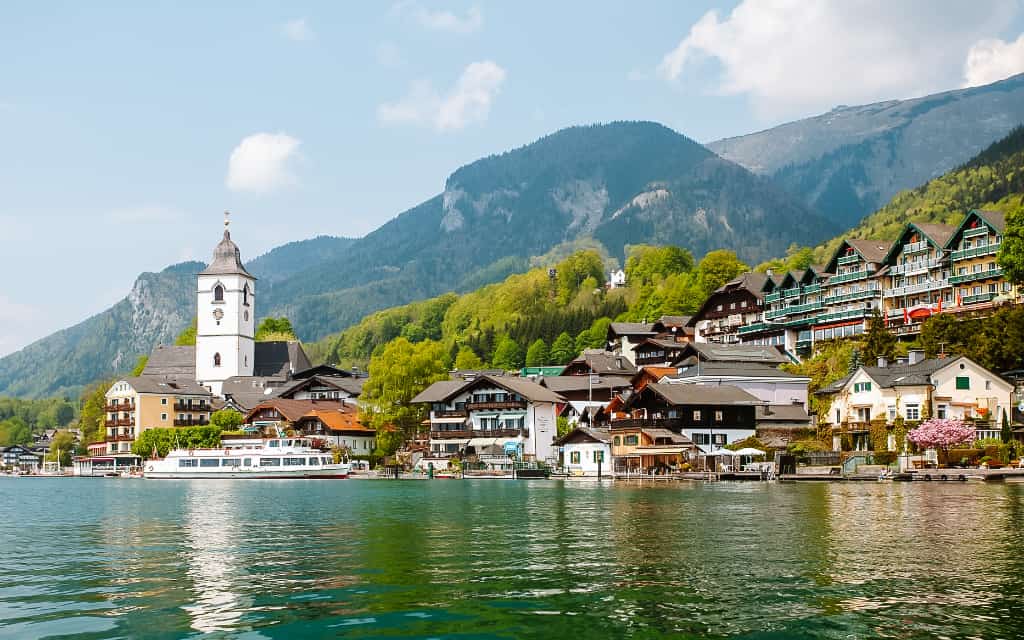
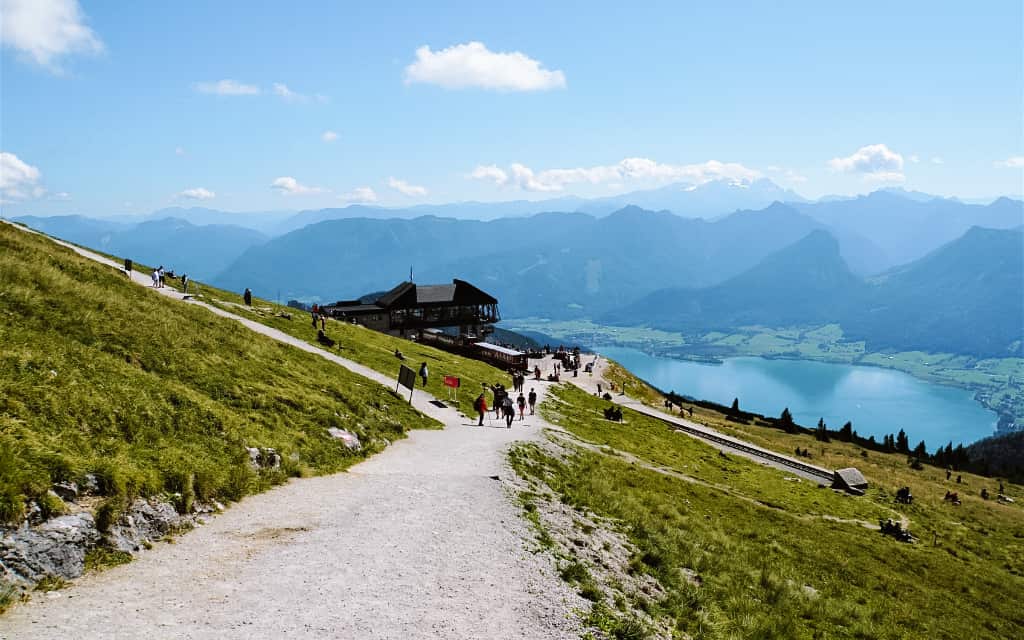
3. Villages Alpbach and Achensee
The village of Alpbach in Tyrol holds the title of the most beautiful flower village in Austria and the most beautiful Austrian village ever. With wooden houses, balconies full of flowers and the true Alpine atmosphere you think of when you think of the Austrian Alps.
The village and its surroundings are like a poster cut for the Alps. There are plenty of accommodation options and a ski resort.
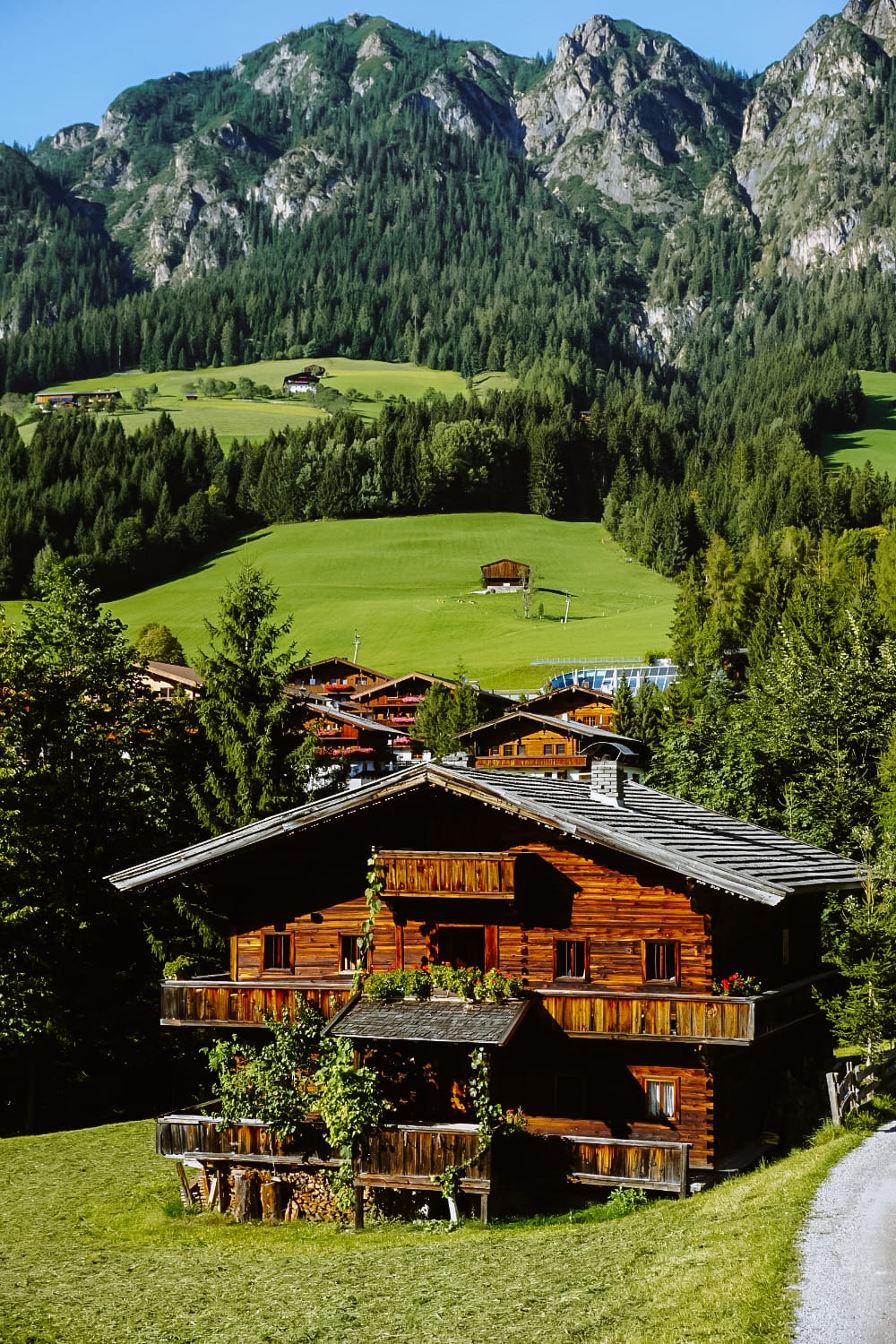
Alpbach is only half an hour’s drive from Achensee, the largest lake in Tyrol. The Achensee is worth seeing in itself – with its beautifully clear water and impressive backdrop of high Alpine peaks.
We loved it as soon as we arrived. In addition, it is more accessible than other lakes in Austria – there is a well-maintained path around the lake and the shores are not built up with private land, so you can reach the water.
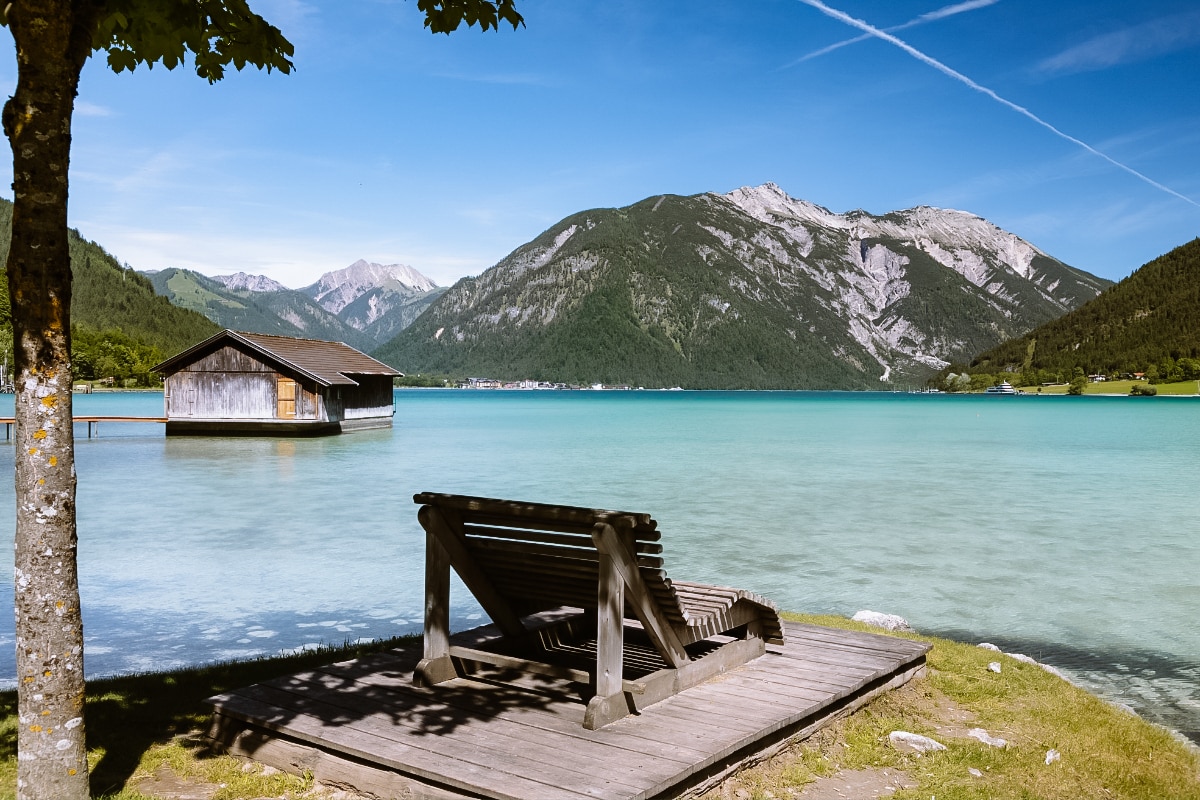
At the Achensee you can swim, go boating, hike or cycle, and in winter enjoy the great ski slopes. It is an ideal place for outdoor enthusiasts and families with children.
☞ More information: We have written a separate guide for Lake Achensee. Here are some tips for trips and hiking in Tyrol.
Hotels Achensee 😴
These accommodations include the Achensee Card, which gives you discounts on area attractions. All guests will receive their card automatically on arrival.
4. National Park of the High Tatras
Imagine imposing peaks reaching for the clouds, lakes clear as crystal, flower meadows spreading out under blue skies and lush alpine pastures where animals graze contentedly – welcome to the High Tatras National Park.
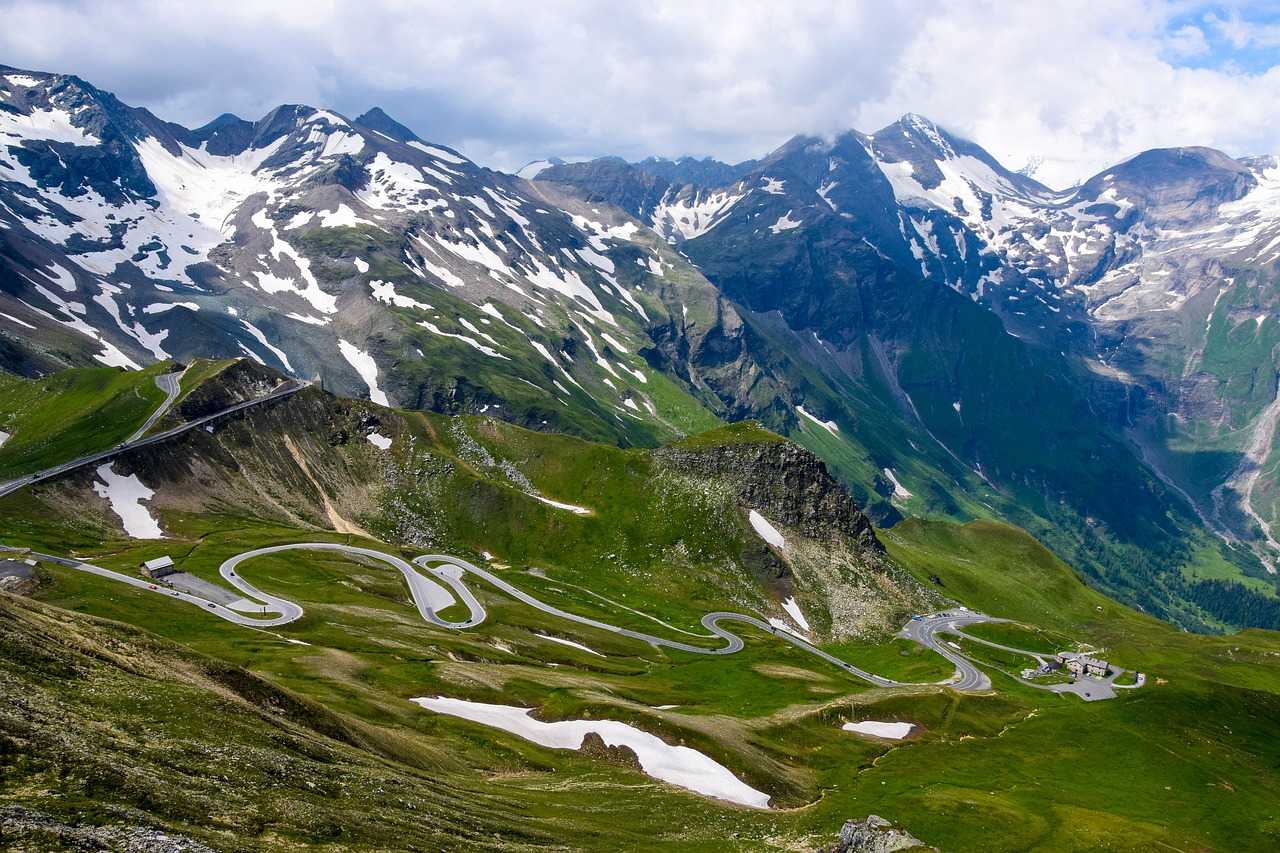
The Hohe Tauern is the largest national park in the Alps. The area is home to an incredible 266 peaks that boast an elevation of over 3,000 metres. Among them is the Grossglockner, Austria’s highest mountain, which rises to 3,798 metres above sea level.
One of the best ways to enjoy the High Tatras is the Grossglockner Alpine Road. The road runs across the park from north to south and is 48 km long.
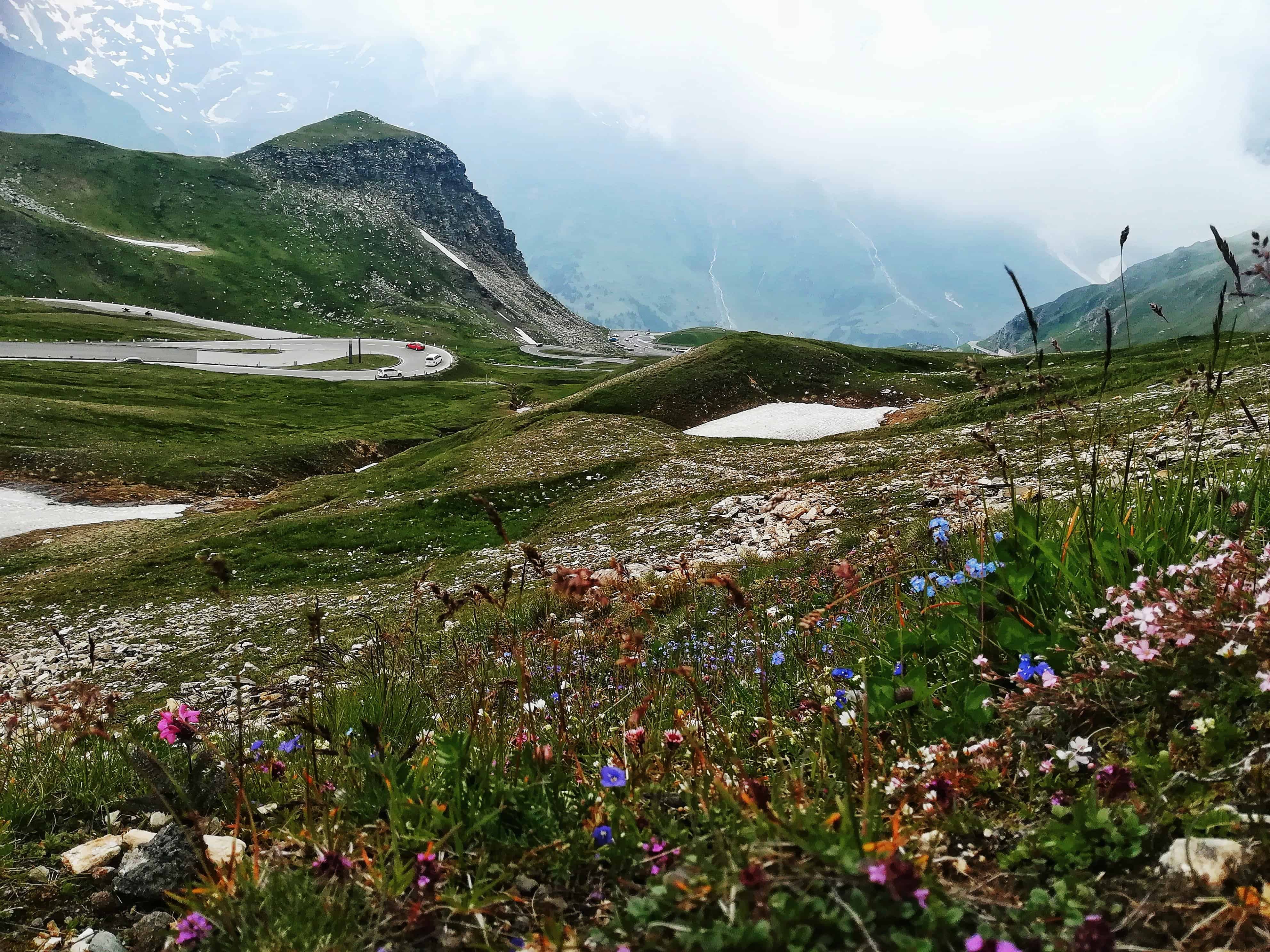
Useful tips before visiting the Grossglockner Hochalpenstrasse
On the way you will count 36 turns and overcome an altitude of 1,748 metres. The usual gradient is 12%. Many cyclists also venture onto this high mountain road, so more caution is needed in the season.
The climb is not so steep that most cars can’t handle it (like Tre Cime in Italy). In addition, there are a number of rest areas along the way.
To reach the fourth and highest point, the Edelweißspitze (2571 m), you have to leave the main route and take a narrower cobbled road. You will overcome the steepest climb of the entire Grossglockner Hochalpenstrasse – 14%.
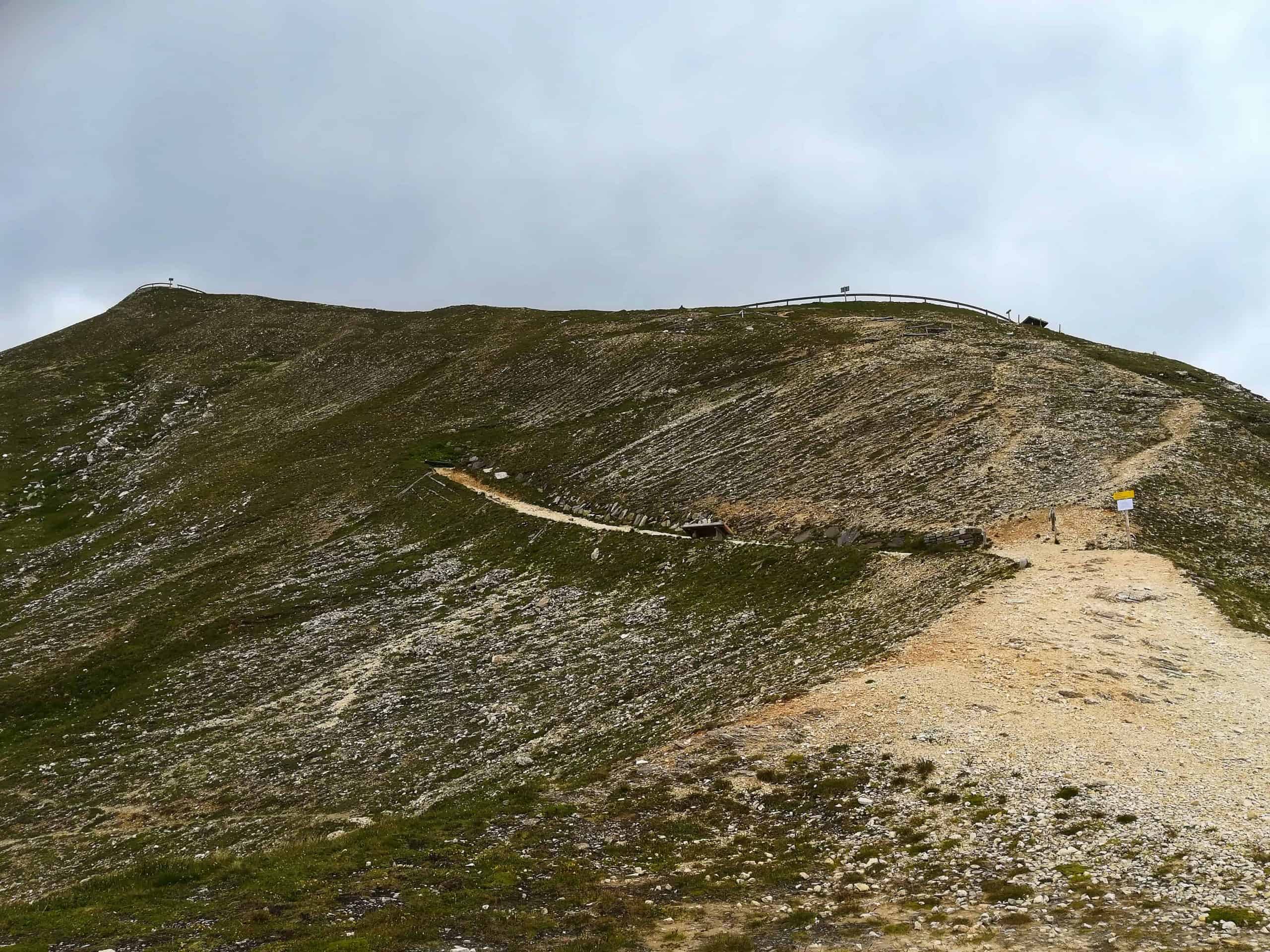
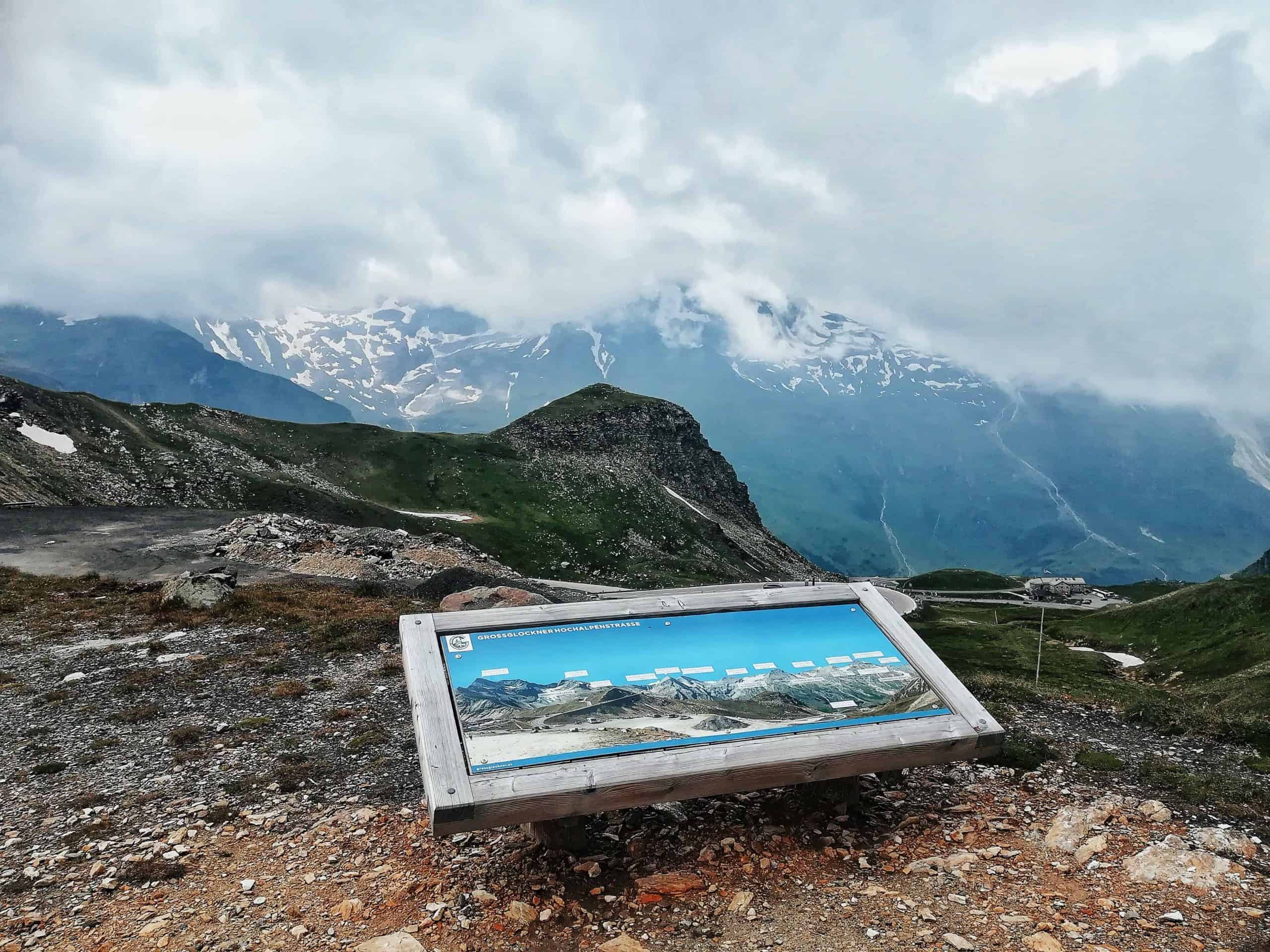
The Grossglockner Alpine Road is open every year from May to early November. Opening hours vary according to the season: in May, passage is possible from 6:00-20:00, from June to August from 5:30-21:00 and from September to early November from 6:00-19:30.
The last entry is always 45 minutes before closing time, but I definitely recommend reserving much more than that. You can easily spend the whole day here – there are refreshments, plenty of resting places and new and new views that never get tired. Or take one of the hiking trails.
The Grossglockner Alpine Road is toll road – car €43 and motorbike €33 in 2024. Here you will find detailed information about entrance fees and opening times.
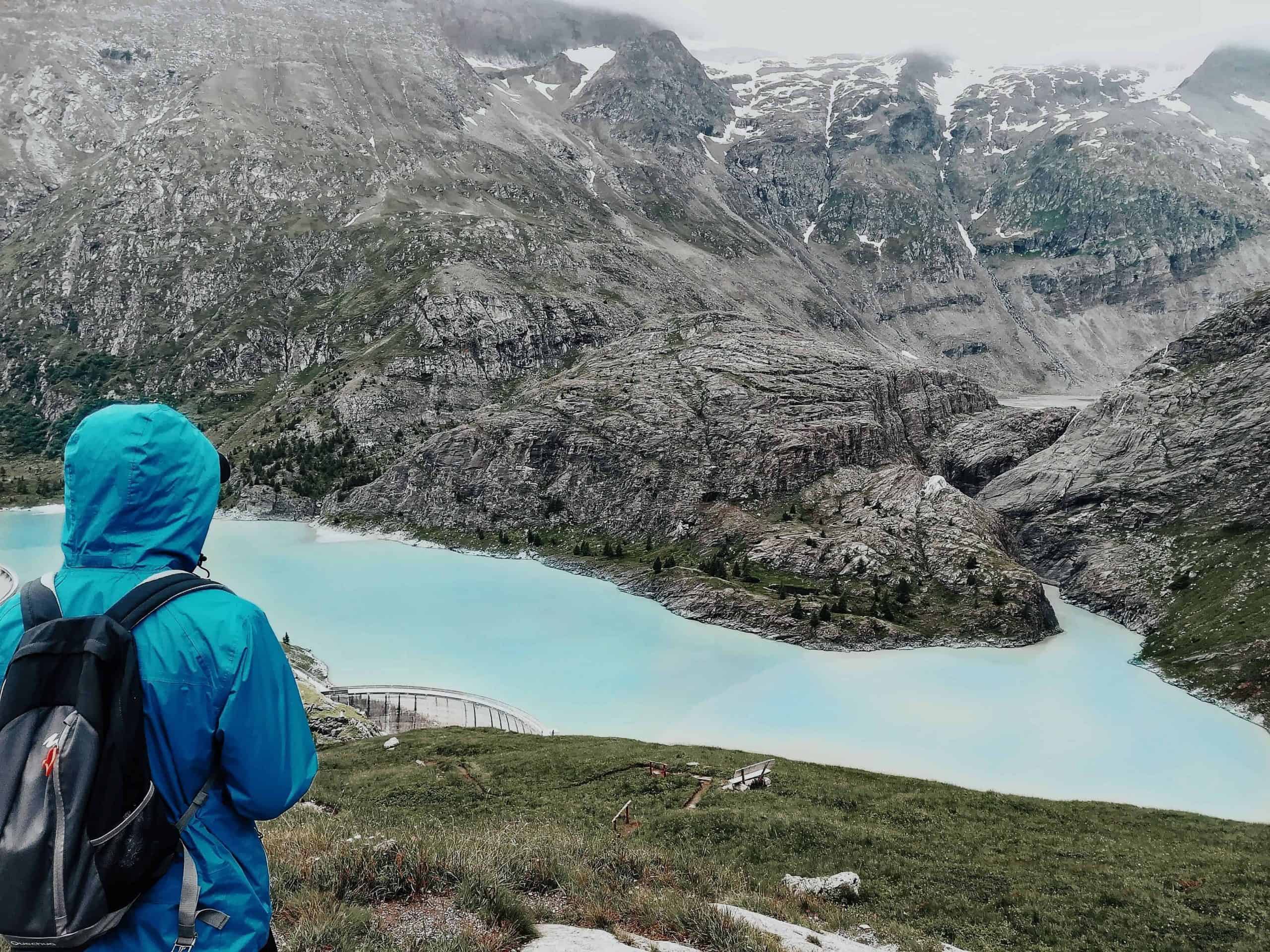
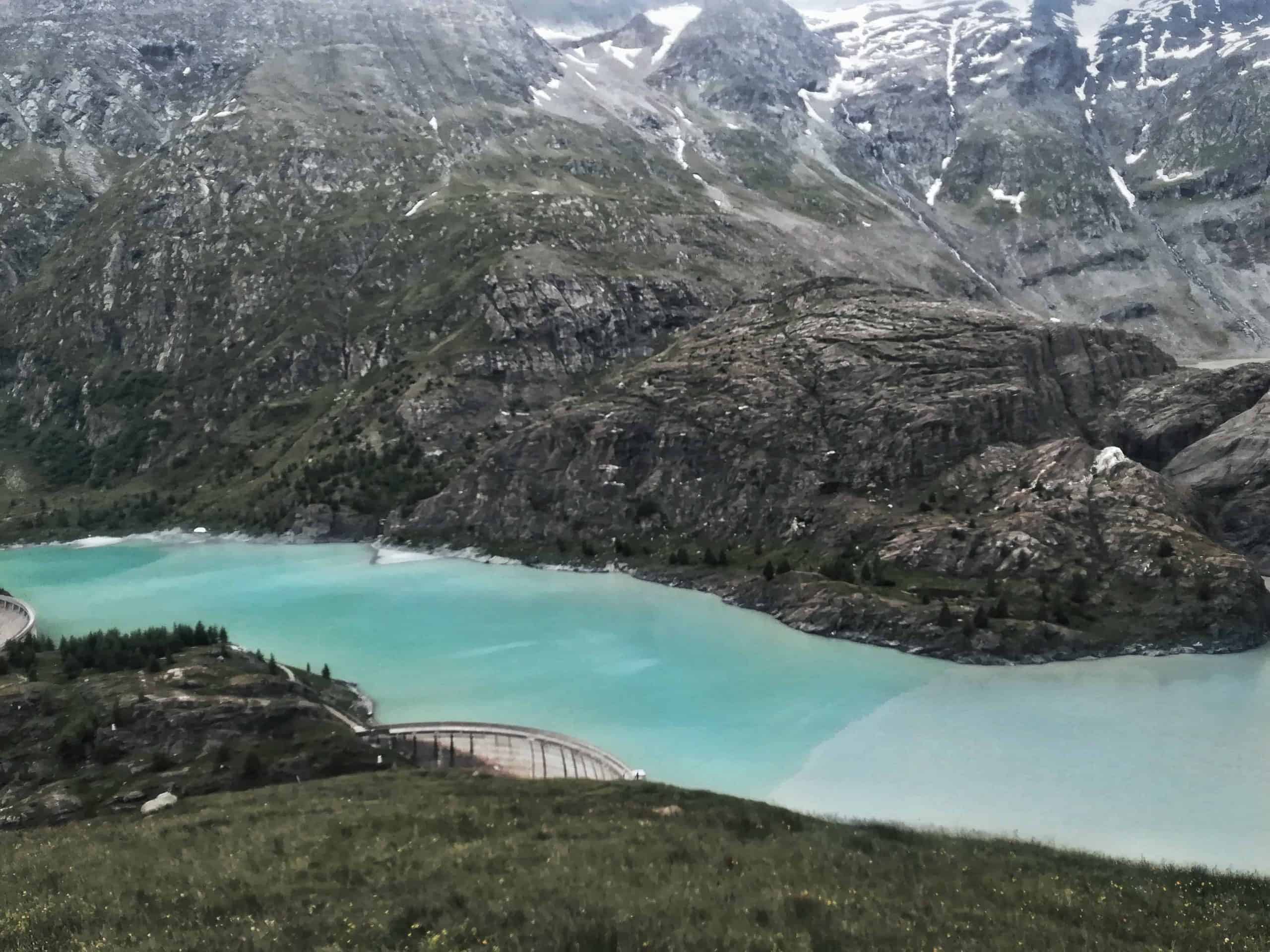
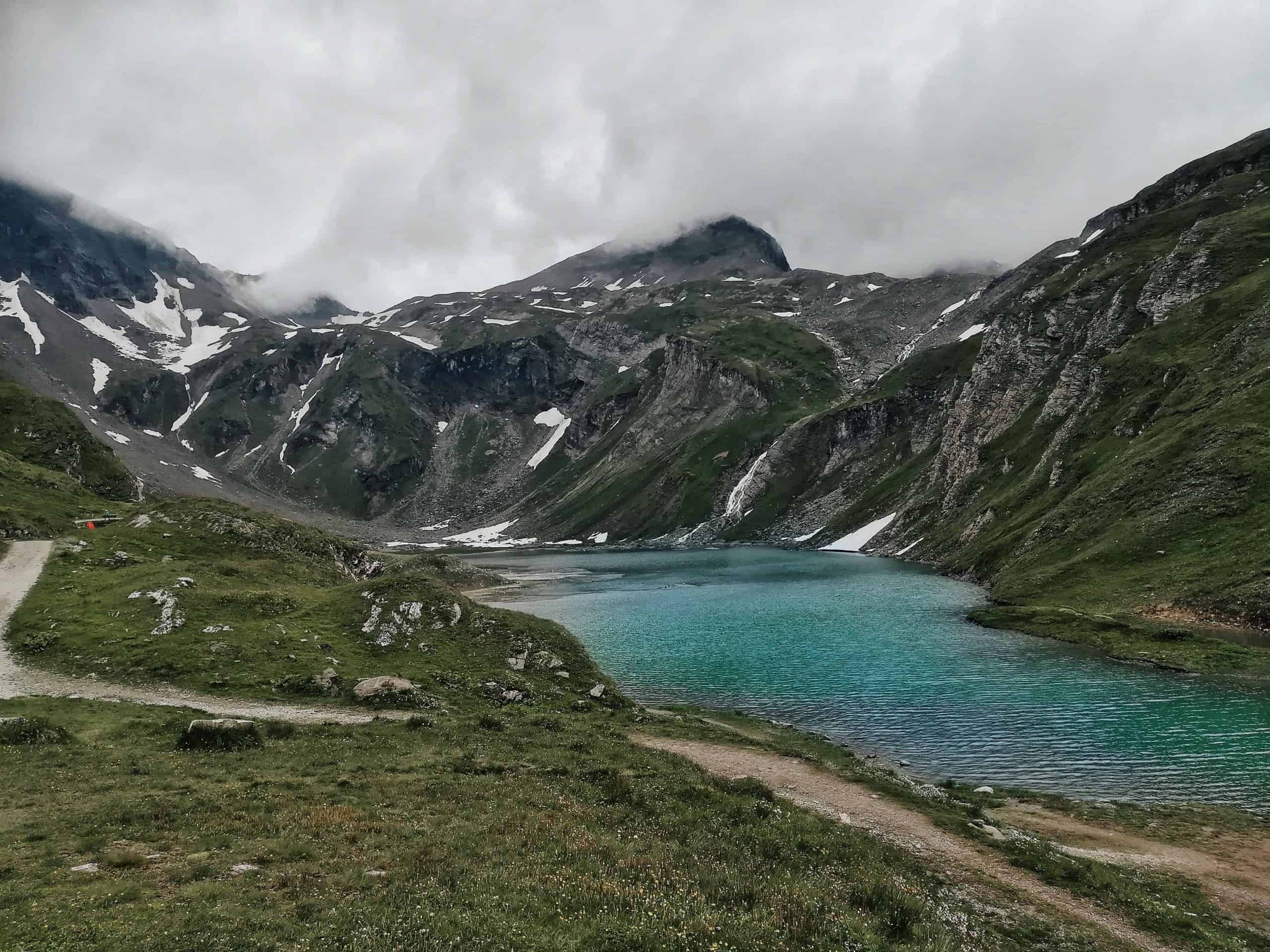
Take a detour to the Pasterze glacier – just before Heiligenblut (it’s signposted). Along the way, you’ll find turquoise lakes, waterfalls and fantastic views of the glacier at the foot of the Grossglockner.
There are refreshments and free parking.
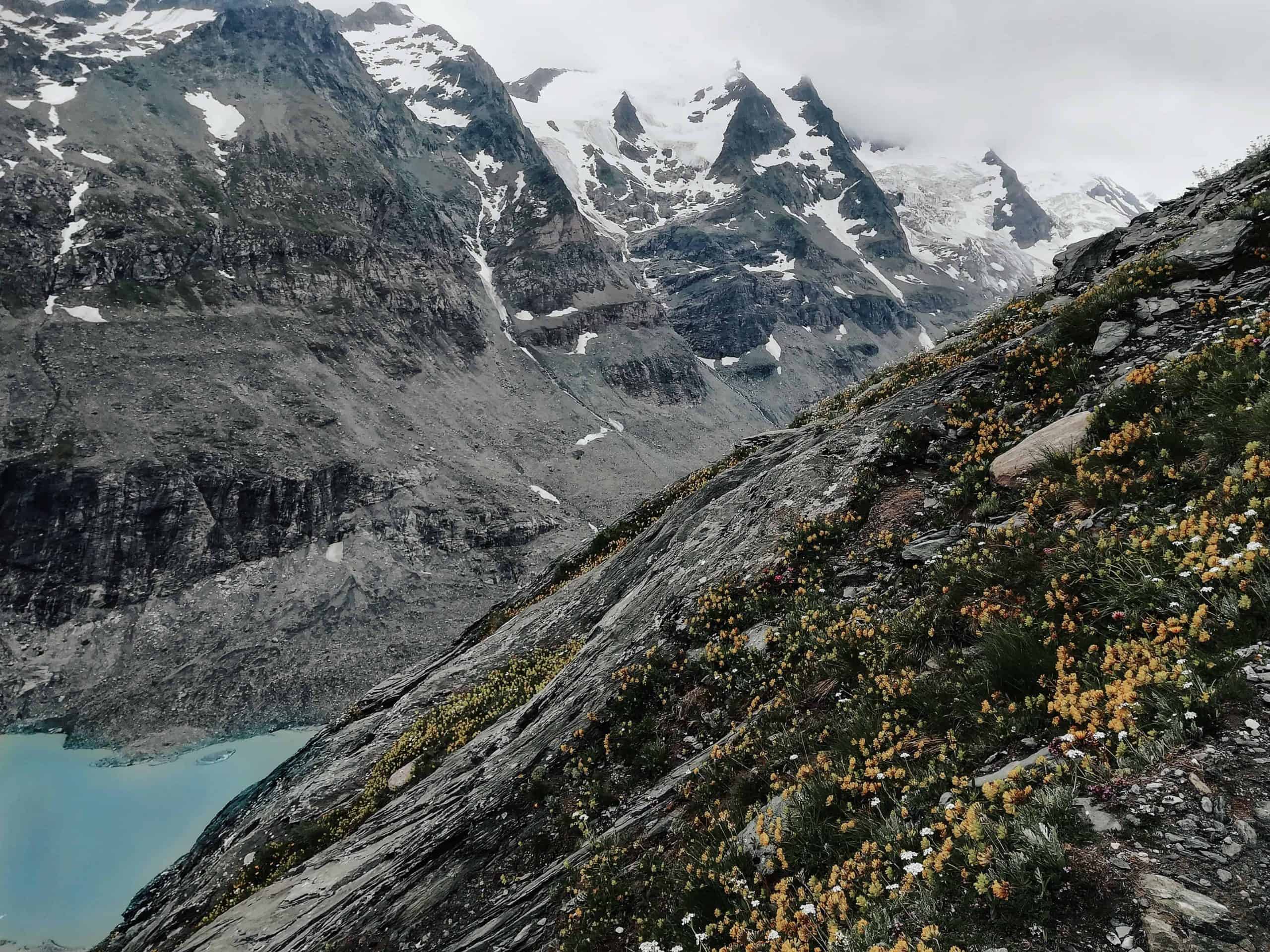
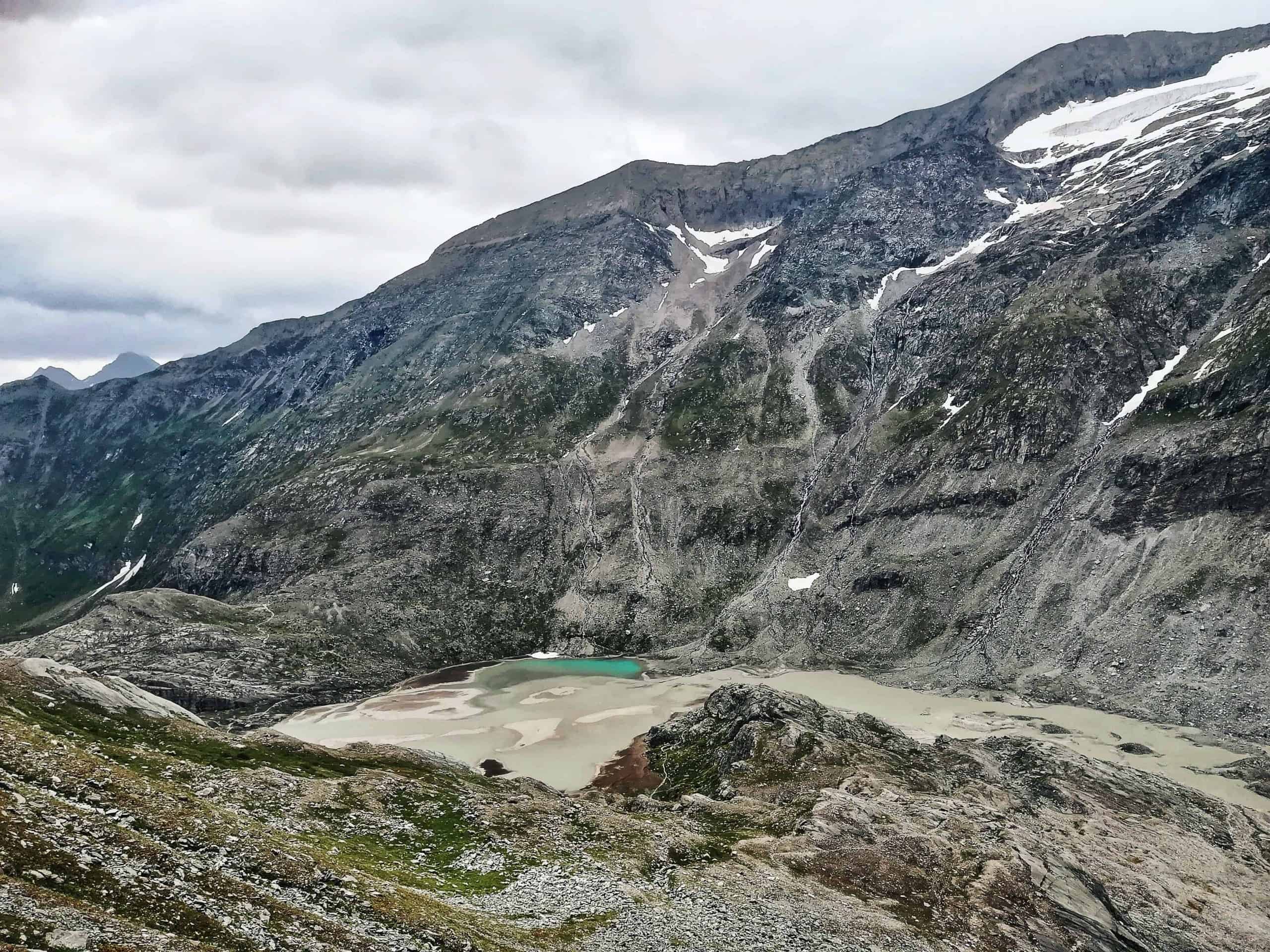
You can also go down directly to the glacier. In the valley you will see the small Sandersee lakes on your left and the Pasterze glacier on your right.
Read more: get inspired by tips for hikes, attractions and hiking routes in our guide to the High Tatras National Park.
Hotels High Tauren 😴
These accommodations include the SommerCard, which gives you free access to cable cars, public transport and attractions in the Zell am See-Kaprun area. The card is valid from 15th May to 31th October.
5. Dachstein
Dachstein is a majestic mountain massif in the northern limestone Alps in Austria. It is a UNESCO World Heritage Site for its unique karst landscape, rich biodiversity and historical significance.
Its glaciated peaks offer spectacular views of the surrounding Alpine landscape and it is known for its extensive network of hiking trails. On the other hand, it is one of the most visited areas in the Austrian Alps. And we’ll show you why.
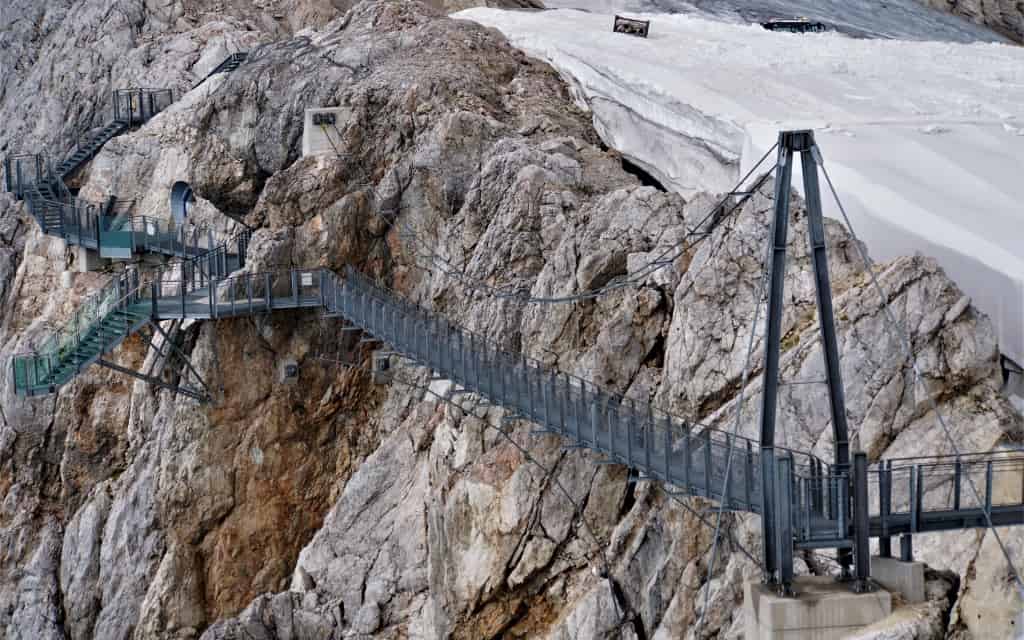
Hoher Dachstein
The highest peak of the Dachstein is the Hoher Dachstein with a height of 2,995 m, below which the Hallstatt Glacier extends. The mountain is also known for its ice and limestone caves, of which there are more than 240.
A cable car takes you up to Hoher Dachstein. The Skywalk observation deck is located at the top station and is free to enter. From here you can go to the toll part – a suspension bridge with a glass view “Stairs to nowhere”. This is the highest suspension bridge in Austria, so your adrenaline will probably be jumping high.
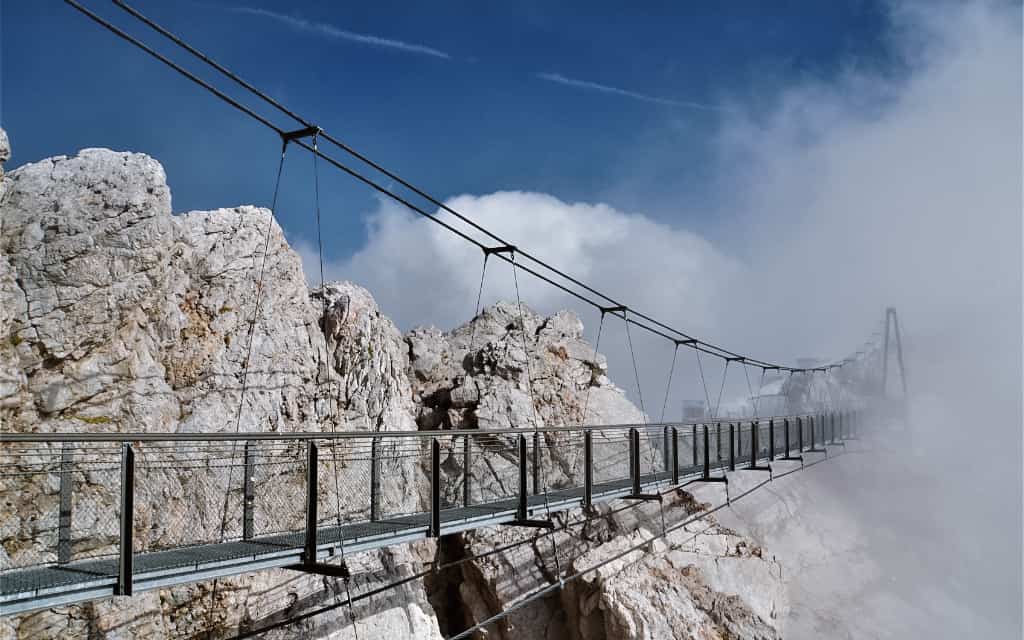
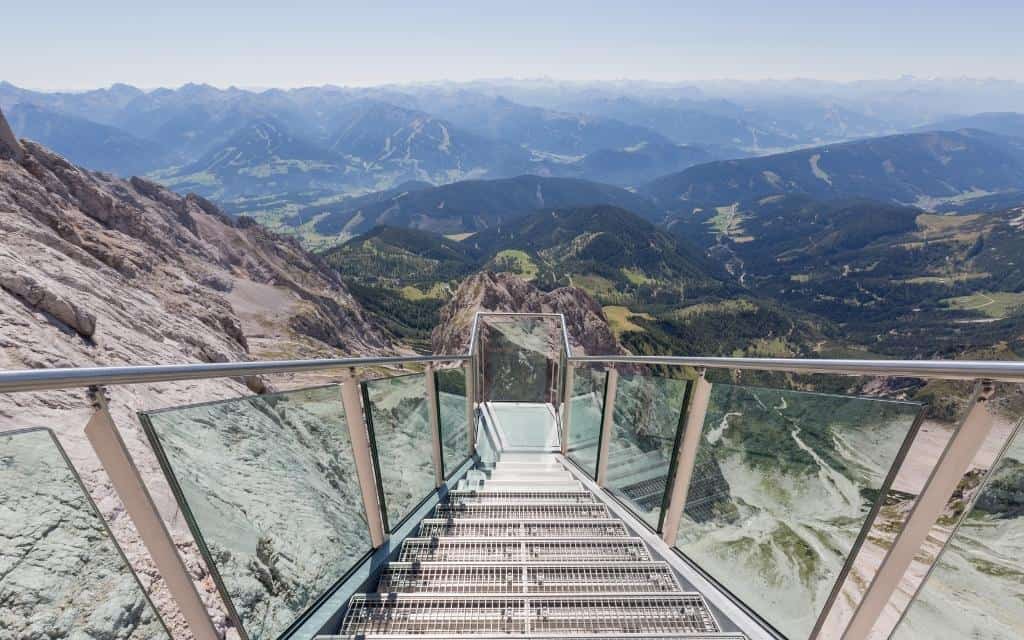
Cross the bridge to the Ice Kingdom, where there are ice corridors with carved figures and buildings such as the Eiffel Tower. From May to September, the cable car must be booked in advance, preferably at least 2 days in advance.
Krippenstein
On the north side of the Dachstein is the Krippenstein peak. Another place that no lover of breathtaking views should miss.
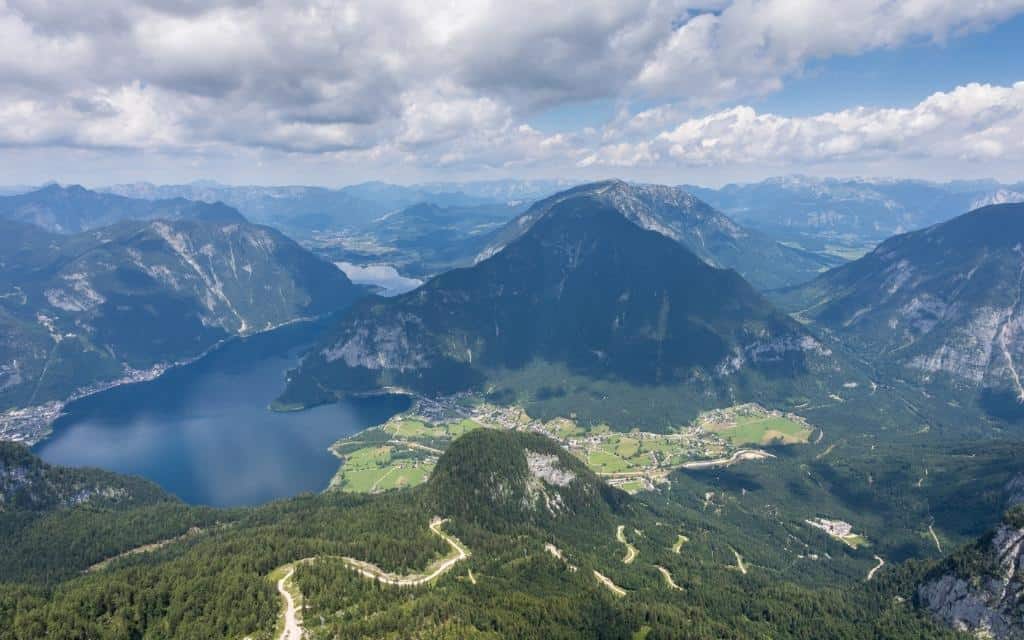
The easiest way to get to the top is by cable car. And what will you see here? You can get off at the first station and visit the Ice Cave and Mammoth Cave. Or continue on to the 5 Fingers viewpoint, one of the most famous viewpoints in Austria. Hallstatt and the Salzkammergut are just a stone’s throw away.
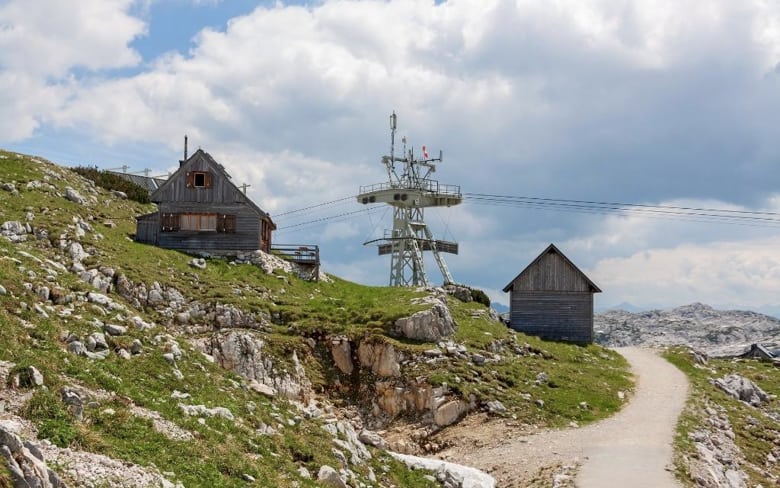
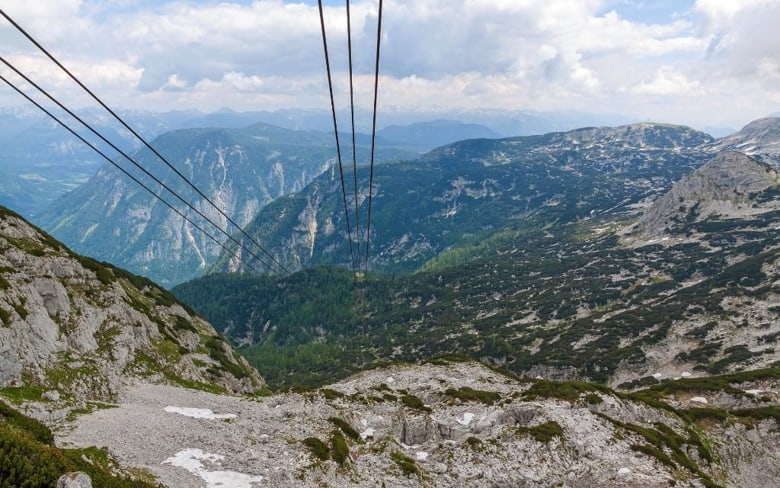
The caves are paid, the entrance to the viewpoint is free. If you book your tickets in advance, you don’t have to queue for tickets at the lower cable car station. There are also discounted tickets for families, with which you can save significantly.
Krippenstein is ideal for easy hiking. Perfect place for families with children.
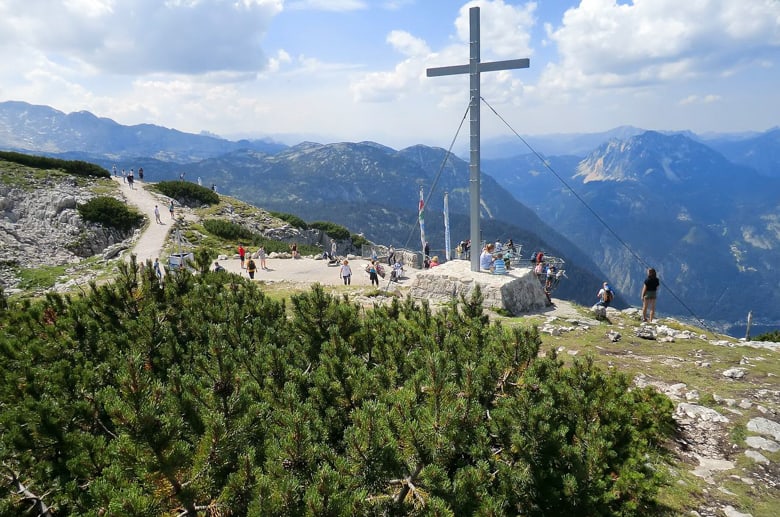
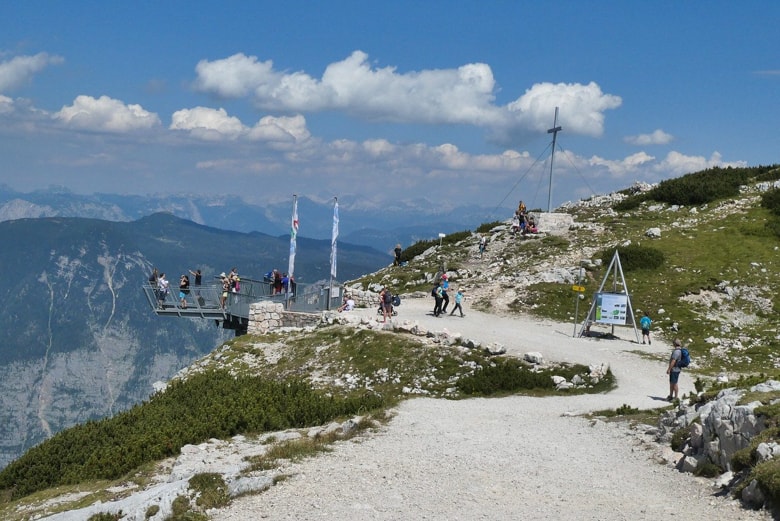
Tip: Due to the popularity of the Dachstein mountains, I recommend taking the first cable car in the morning to avoid the crowds and waiting in line for the cable car. Plus, the weather is more stable in the morning and you have a better chance of beautiful views.
Tip: If you want to enjoy the best views of Dachstein, head to Schladming in the south of the mountains and take the Hochwurzen cable car.
☞ More information: Here you will find photos and tips for hikes and hiking routes, what to visit around the Dachstein.
Accommodation Dachstein 😴
6. Eisriesenwelt
The Eisriesenwelt ice cave near Salzburg is the largest ice cave in the world and will literally take your breath away.
The total length of the Eisriesenwelt cave system is more than 40 kilometres, but the hiking trails are only accessible in the first kilometre, where the ice formations are the most prominent and impressive.
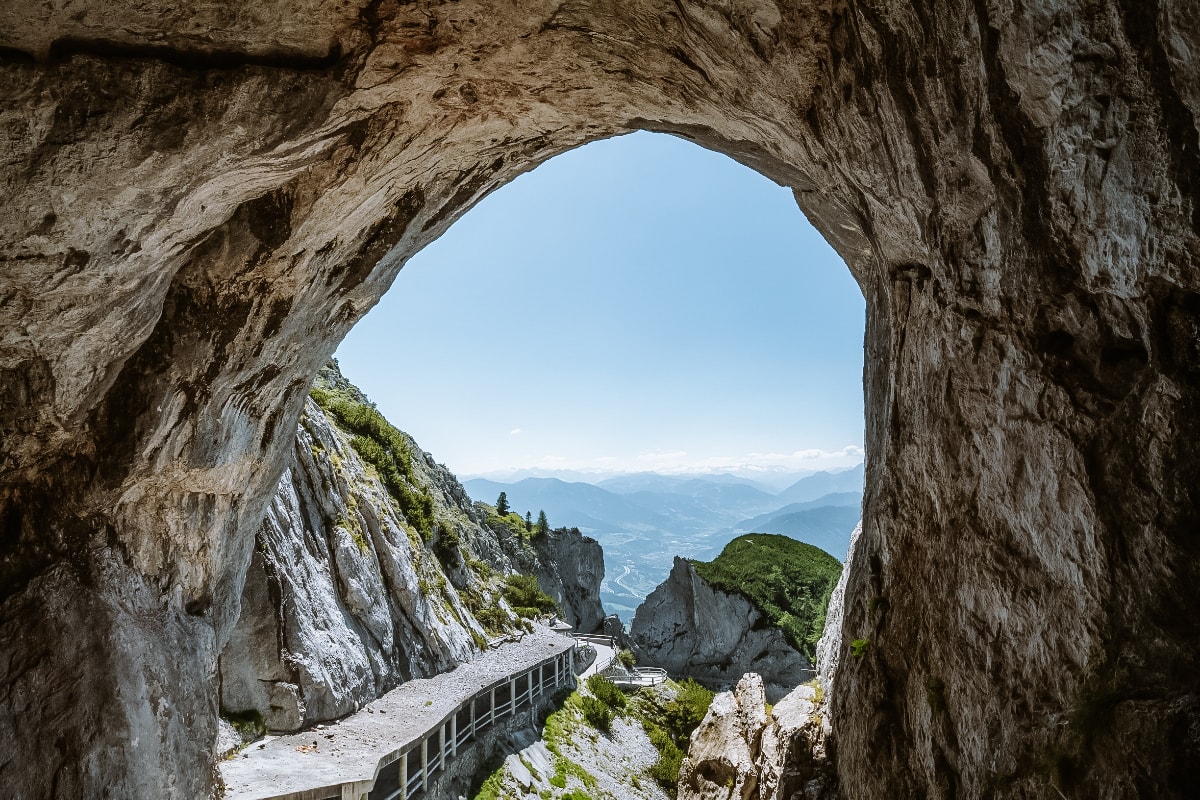
Access to the cave involves a relatively steep cable car ride and a subsequent hike (about 20 minutes), during which you can enjoy spectacular views of the surrounding area. The tour is guided and lasts about an hour. It is around zero in the cave, so don’t forget to pack warm clothes.

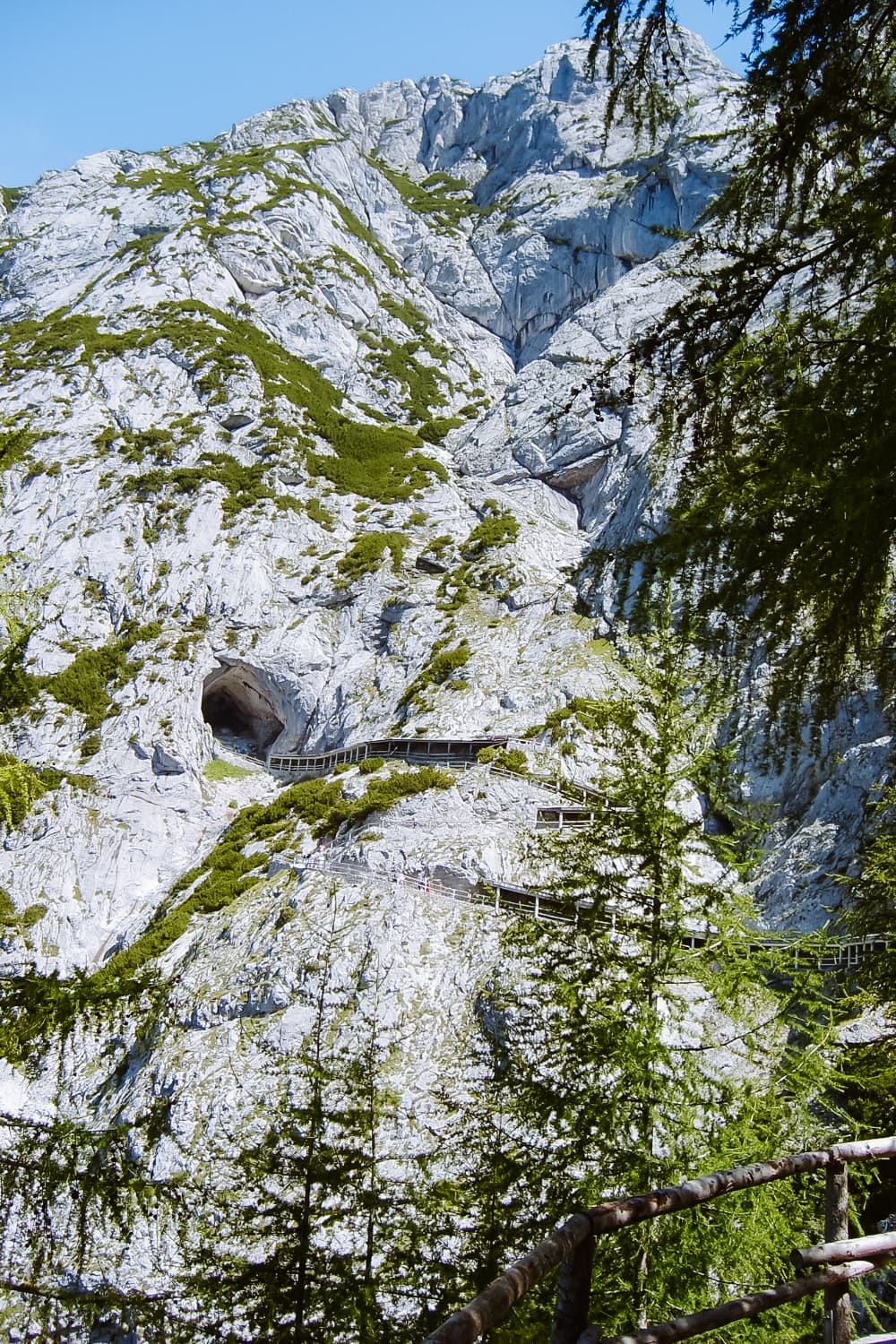
Inside you will descend 700 steps and then the same number of steps to climb. Visiting the cave is not suitable for people with limited mobility or smaller children.
Come as early as possible in the season. There is a large parking lot, but it fills up early.
More information: Here is a link to the official website where you can buy tickets online (they are cheaper if you book in advance).
7. Wörthersee
We move south to Carinthia. Carinthia is a beautiful province in Austria, with crystal clear lakes, wild gorges and beautiful mountain scenery that attracts winter skiing and summer hiking and biking.
One of the most popular areas in Carinthia is Lake Wörthersee. An elegant lake popular for its lively resorts, beautiful surroundings and turquoise water.
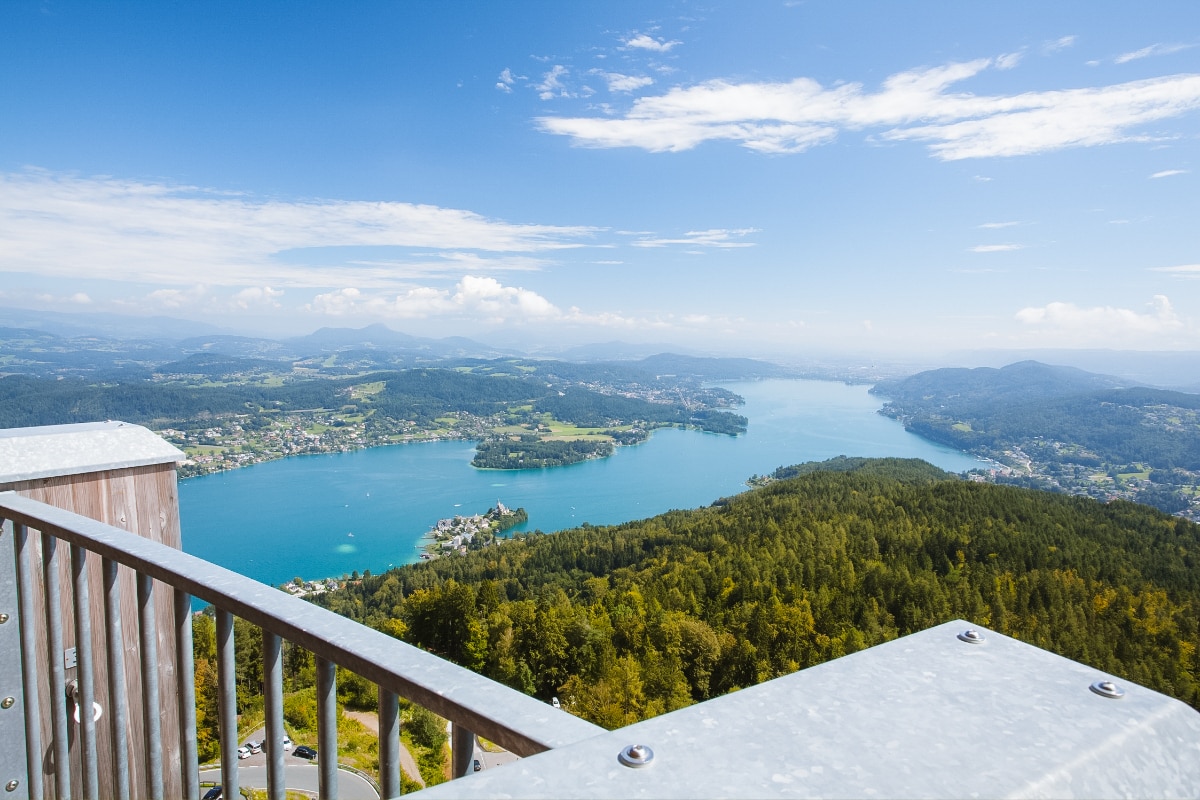

In addition, you can take a variety of excursions in the surrounding area – visit the Minimundus Miniature Park, climb the world’s tallest wooden lookout tower or take a trip to see macaques.
☞ For more tips about the lake, check out our detailed guide to Wörthersee in Austria. We’ve put together tips on things to do in Carinthia. If you’re looking for a holiday by the water, here are the most beautiful lakes in Carinthia.
Accommodation Wörthersee 😴
These accommodations include the Wörthersee Plus Card, which gives you free admission or discounts to area attractions. All guests will receive their card on the day of arrival, along with a leaflet explaining what the card includes. The card is valid from the beginning of April to the beginning of November.
8. Lünersee
We move to the very west into Vorarlberg. Here you will find the beautiful Lake Lünersee at an altitude of 1,970 m. If a list of the most beautiful lakes in Austria were to be compiled, Lünersee would definitely be in the top ten. In 2019, it even won the title of the most beautiful place in Austria.
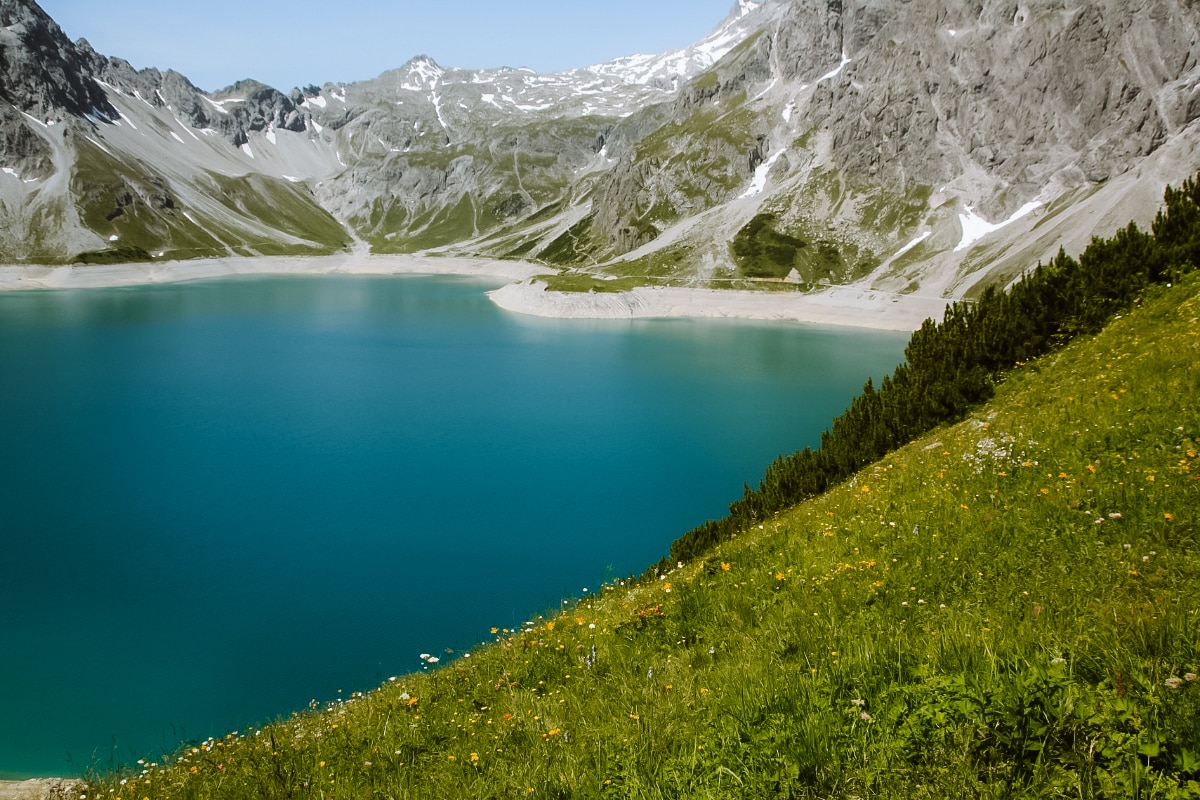
The easiest way to get to the lake is by cable car or you can also go on foot (about 1.5 hours). Bus No. 580 – this is a good choice for those who don’t feel like taking a road with a few tight turns. There is a paid parking lot at the top (about 4 € for the whole day).
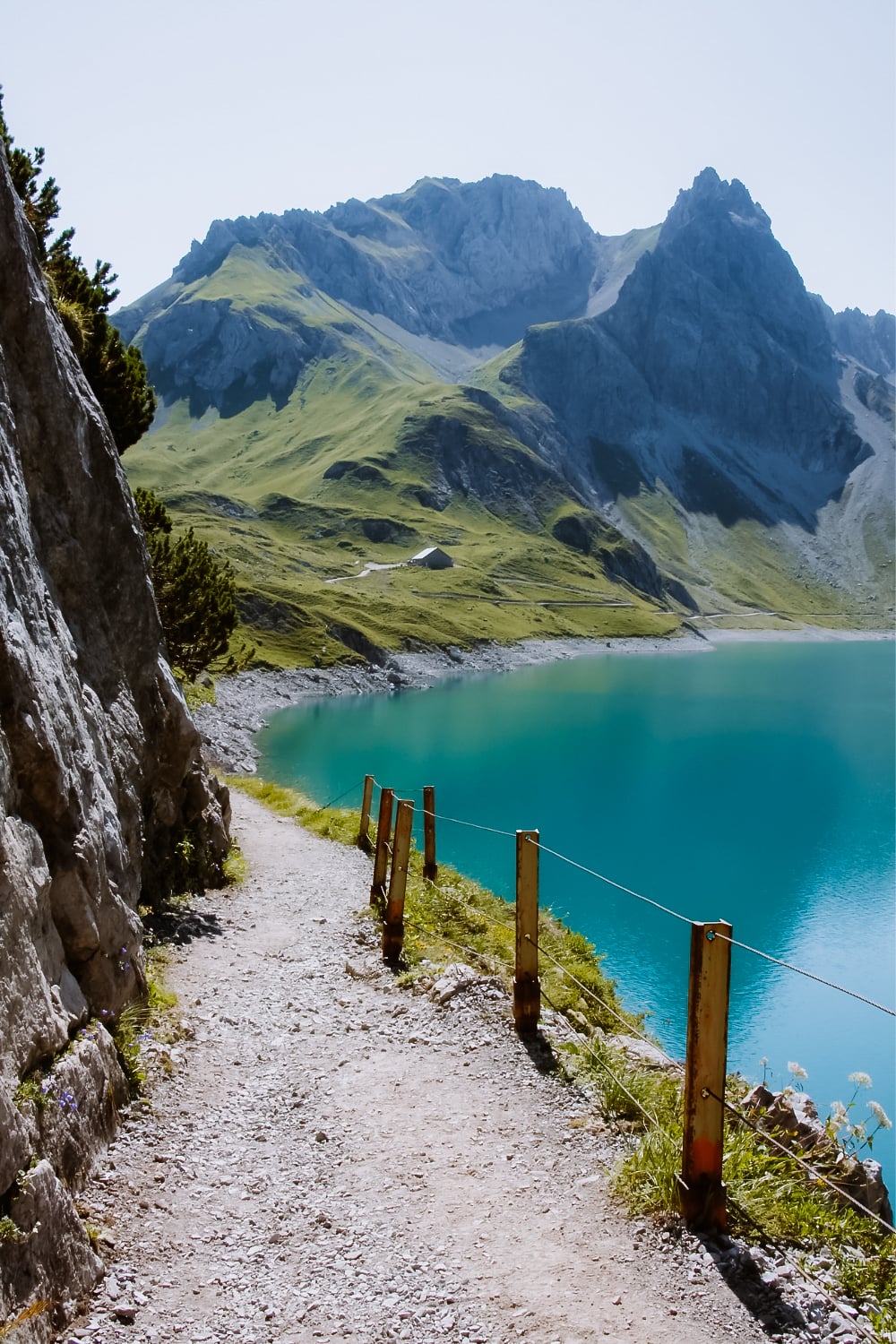
The Lünersee is an ideal trip for everyone. There is an easy walk around the lake or you can climb one of the peaks in the area for the best views of the lake.
Right by the lake is a mountain hut with a large terrace, where you can enjoy a delicious Kaiserschmarrn.
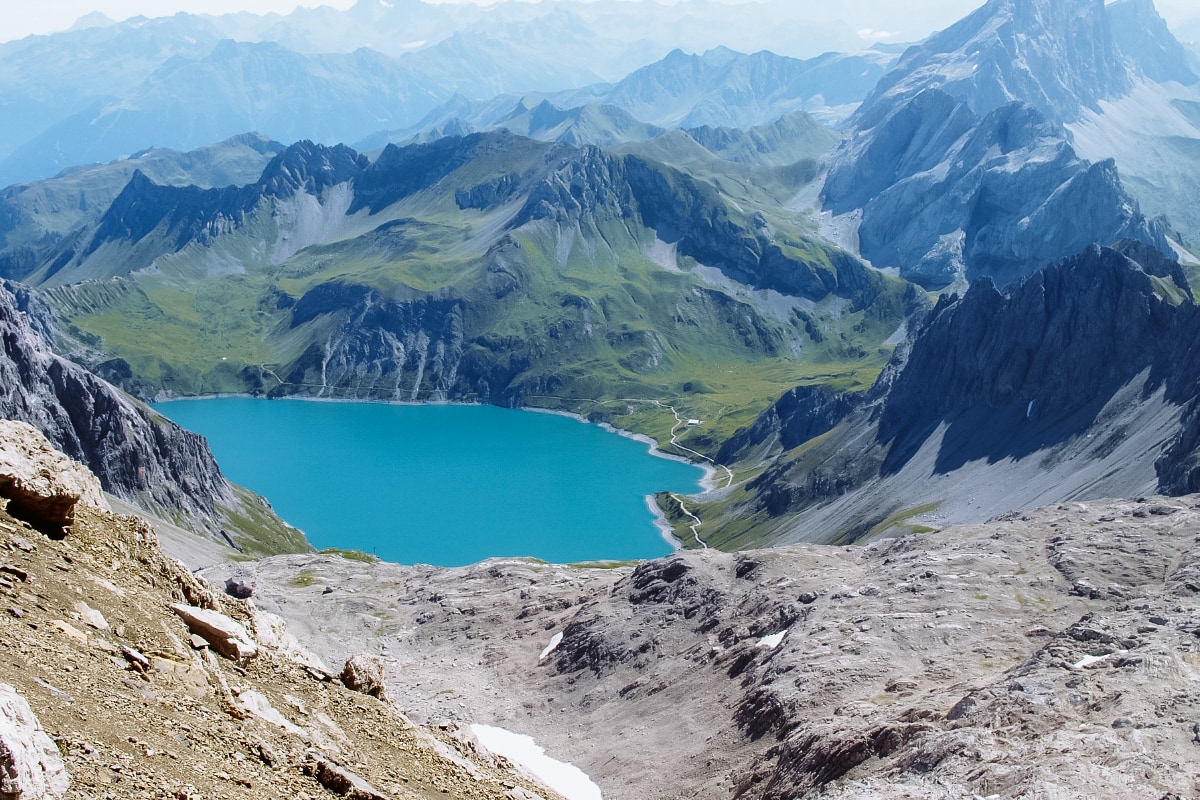
9. Silvretta Mountains
We will stay in the west of Austria. This is where you’ll find one of the most beautiful areas in the Austrian Alps – the Silvretta Mountains, dominated by crystal clear lakes, green valleys and Alpine peaks over 3,000 metres.
The Silvretta Highway, connecting Partenen in Montafon and Galtür, will take you through the mountains. Its length is 22.3 km.

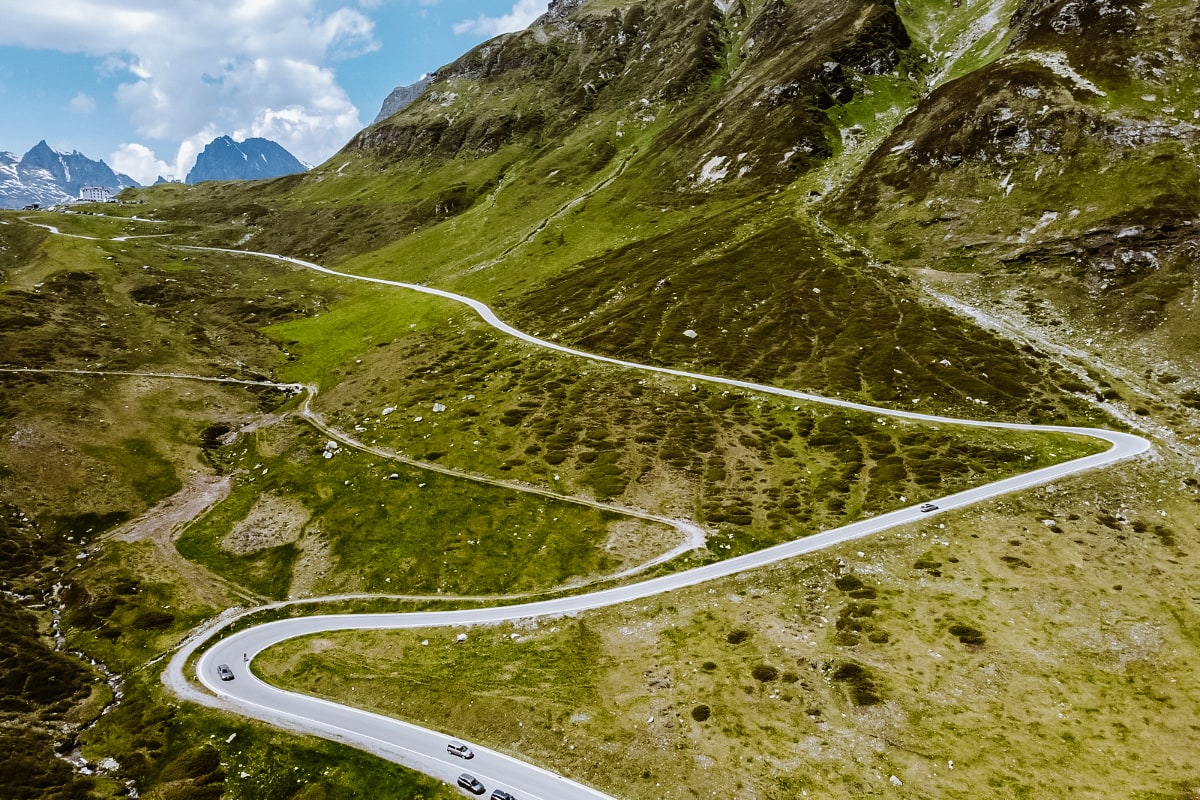
One of the attractions of the Silvretta Hochalpenstrasse are lakes. At the Bielerhöhe Pass you will pass Silvretta Stausee and then Vermunt Stausee towards Partenen.
On the other side of the Silvretta mountain road lies the popular Kops Stausee lake. Unlike the previous two lakes, you can only get here on foot or by bike.
More information: Here is a link to the official website of the Silvretta Alpine Road, where you can find out the latest information about entrance fees and opening times.
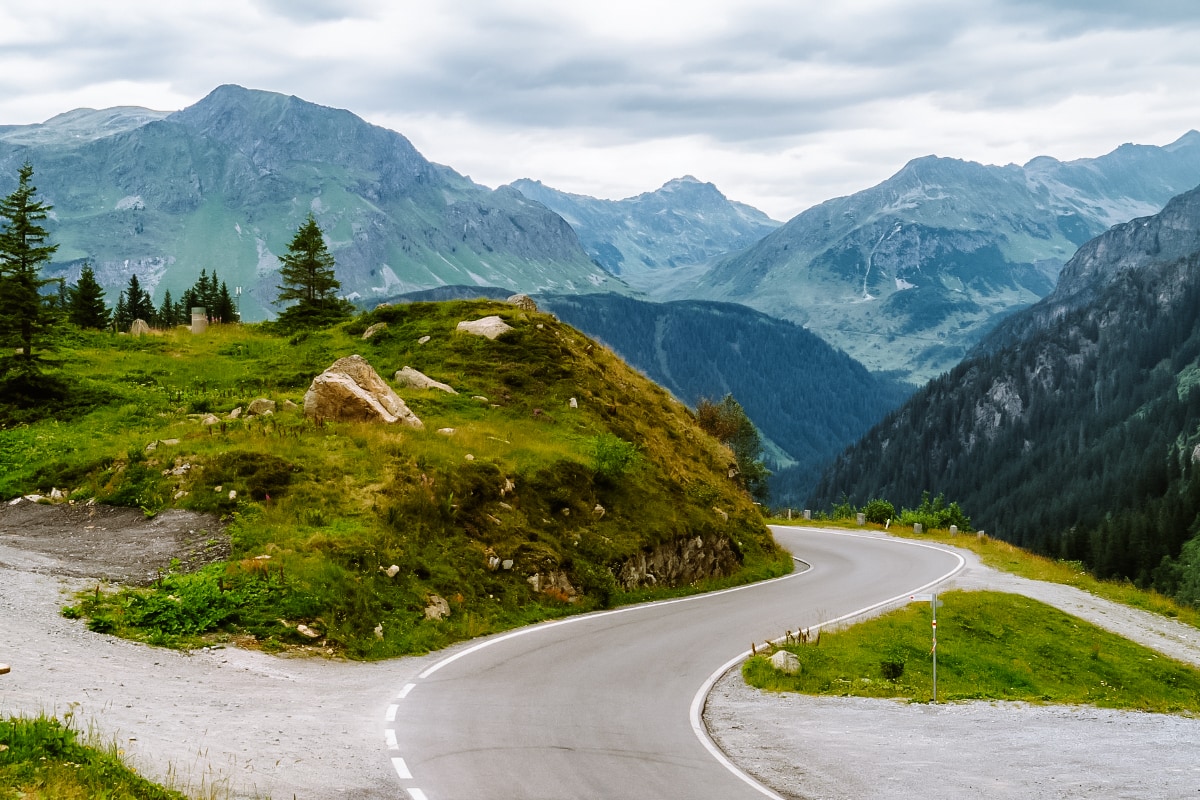
10. Hochkönig Glacier
It is said that Berchtesgaden is the most beautiful part of the Alps on both the German and Austrian sides. And that even though the German Alps are small, Germany has carved out for itself the bigger and prettier part of the Berchtesgaden National Park.
But Austria did not come up short either. The Hochkönig massif, which at 2,941 m is the highest peak in the entire Berchtesgaden National Park, is located here.
The Hochkönig glacier is perfect for winter skiing and summer hiking. You can choose from easy or challenging day trails.
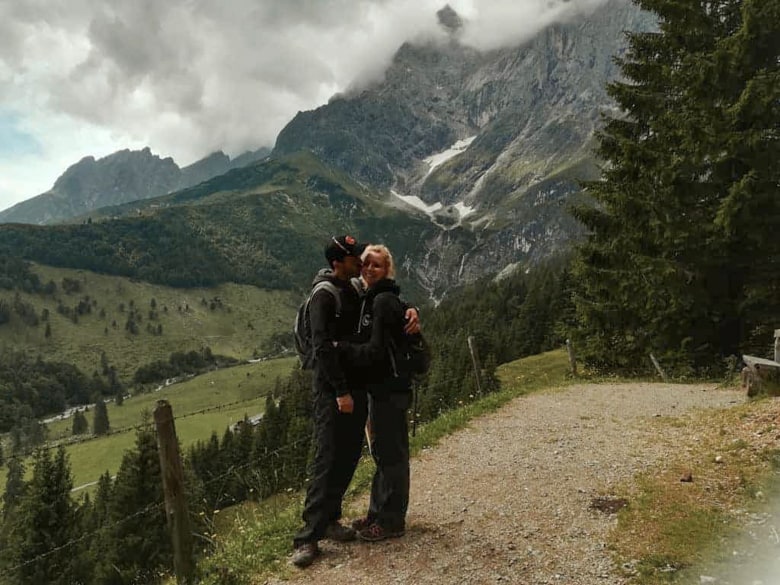
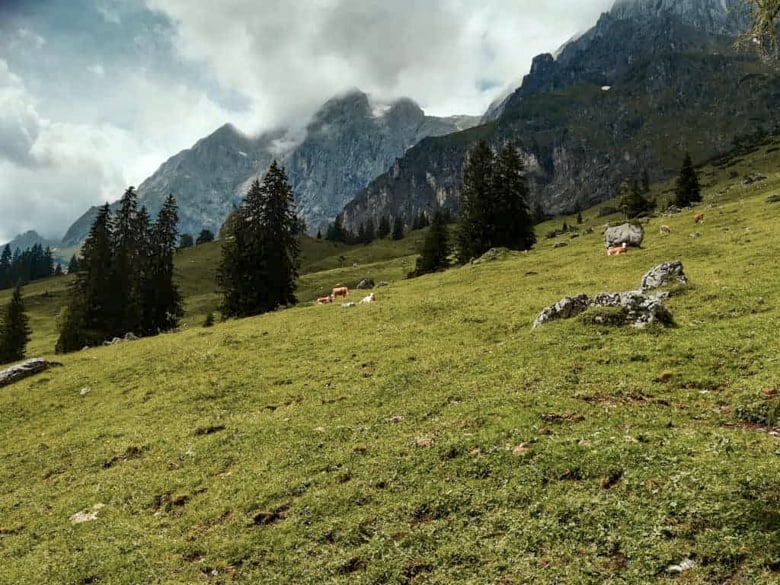
The easy route follows the Königsweg trail along the foot of the entire massif. Along the way, you will see distant views, typical Austrian huts with typically smiling Austrian staff, cows, horses, waterfalls. The route is also suitable for families with children.
You can also climb the Hochkönig. You will have to climb 1,600 m, but it can be done in a day if you start early in the morning.
11. Ötztal Alps
The Ötztal Alps are characterised by extensive glaciation and three thousand peaks with the highest peak in the whole of Tyrol – Wildspitze (3,768 m).
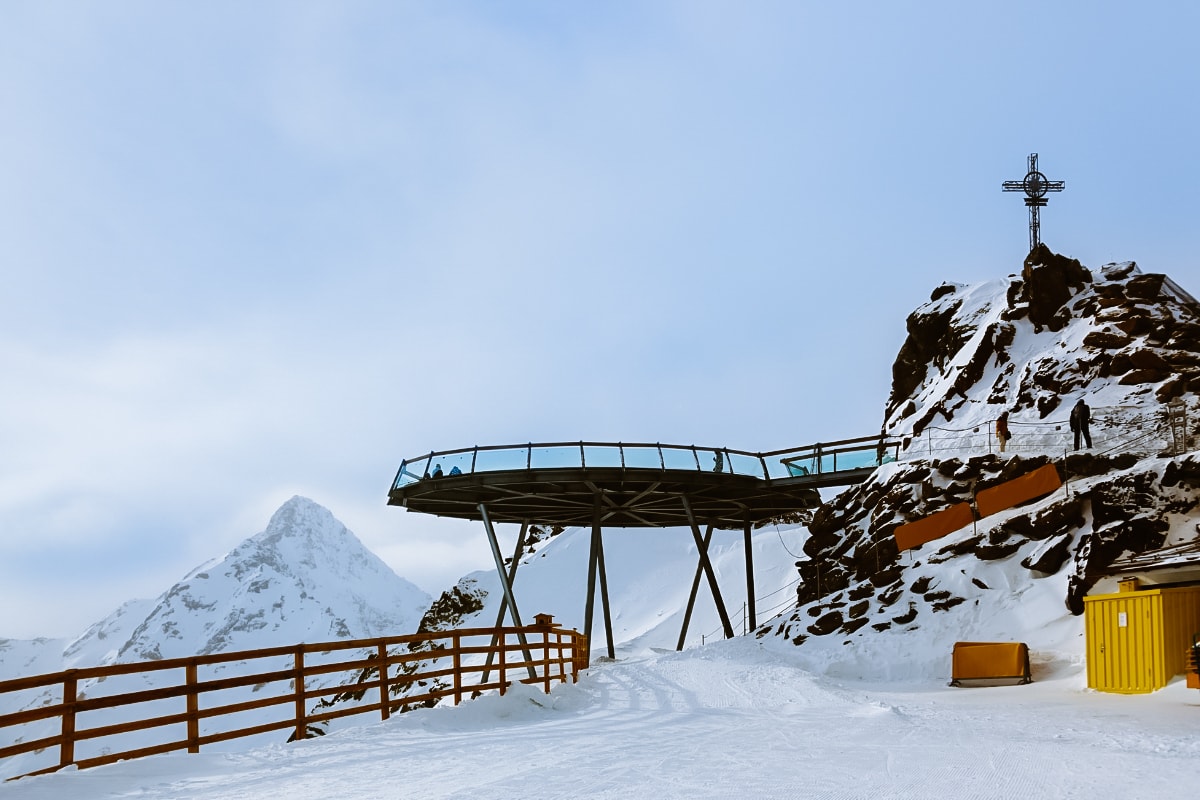
Three main valleys run through the entire area – the Ötztal Valley with the resort of Sölden, the Pitztal Valley with the Pitztaler Glacier and the Kaunertal Valley in the nature park of the same name with the Kaunertal Glacier.
If you want to experience a true alpine environment, the Ötztal Alps are one of the best places in Austria. You can find them in West Tyrol.
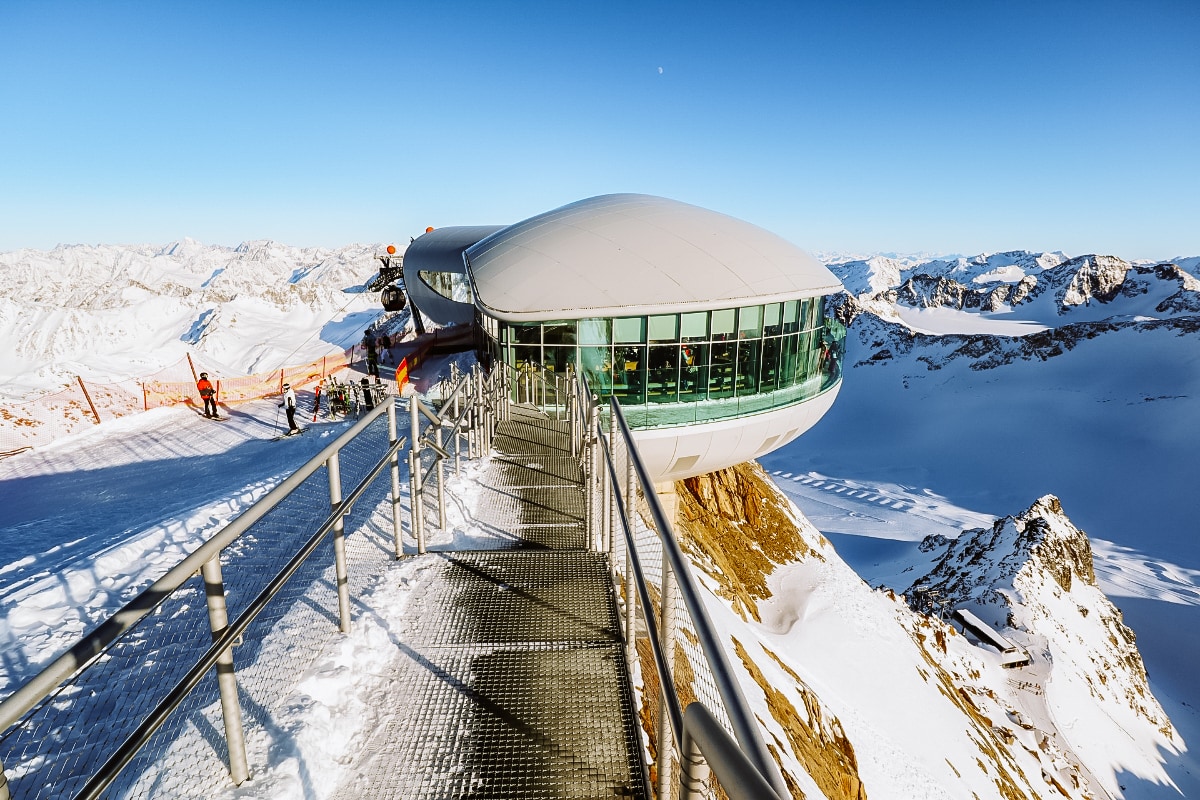
Visit Sölden for great skiing and breathtaking views from the modern viewing platforms and James Bond restaurant.
Or have a cake at the highest café in Pitztal and enjoy hiking without the crowds in the Kaunertal Valley.
Accommodation Ötztal Alps 😴
The most beautiful places in the Austrian Alps – map
These were our picks for the most beautiful places in the Austrian Alps. Do you have a question? We’ll be happy to answer it in the comments below. Have a safe journey!
More information about Austria
AUSTRIA: Here are the most beautiful places in Austria. Are you planning a visit to the Austrian lakes? We have created a list of the most beautiful lakes in Austria, including practical information and a map.
VIENNA: See tips on things to do in Vienna (including entrance fees and opening times) and an itinerary of how to spend 3 days in Vienna. In the article Vienna with kids we share tips on how to enjoy Vienna with the whole family.
AUSTRIAN ALPS: Get inspired by our tips on things to do in the Austrian Alps (hiking routes, excursions).
Or head straight to Tyrol or Lake Wolfgangsee. Another popular destination in the Austrian Alps is the Dachstein mountain range or the popular resort of Zell am See.
If you want to enjoy the beautiful untouched nature, take a look at things to do in the High Tatras.
Are you tempted by Carinthia? Here are the most beautiful lakes in Carinthia and tips on the most beautiful places not to miss in Carinthia.
